 Search by Keyword
Sign Up Below for our MONTHLY BEATLES TRIVIA QUIZ!
|
"PENNY LANE"
(John Lennon – Paul McCartney)
"This was one of the best things about Lennon and McCartney, the competitive element within the team. It was great." This quote from Paul McCartney in 1984 encapsulates a sentiment shared by most Beatles fans the world over.
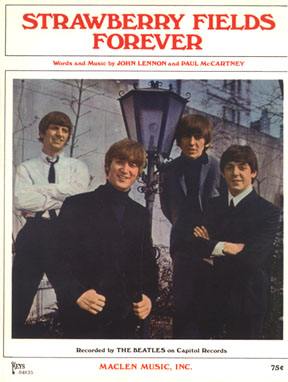 In November of 1966, John Lennon presented to the group a fully written composition entitled “Strawberry Fields Forever” which featured imagery from his childhood in a reflective and, some say, hallucinatory way. Paul decided to give that idea a go himself, the result being “Penny Lane.” Concerning both of these songs, Paul explains in his book “Many Years From Now,” “I think we wrote them round about the same time, we were often answering each others songs so it might well have been my version of a memory song.” In November of 1966, John Lennon presented to the group a fully written composition entitled “Strawberry Fields Forever” which featured imagery from his childhood in a reflective and, some say, hallucinatory way. Paul decided to give that idea a go himself, the result being “Penny Lane.” Concerning both of these songs, Paul explains in his book “Many Years From Now,” “I think we wrote them round about the same time, we were often answering each others songs so it might well have been my version of a memory song.”
Since John and Paul were principally writing songs individually at this point, it was to the public's great advantage that The Beatles contained within itself two strong songwriters who inspired each other on to greater and greater achievements. And it only seems natural that both of these childhood-reflective songs would be paired together to comprise what many claim to be the greatest single in recording music history.
 Penny Lane in 2012.
|
Songwriting History
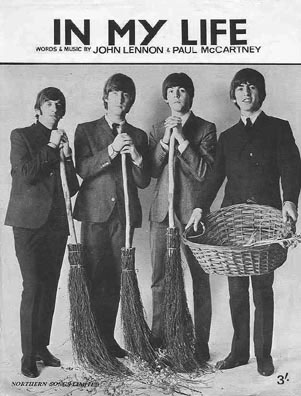 In actuality, the seeds of the idea to write "Penny Lane" were germinating as far back as October of 1965. John began writing lyrics for what was to become "In My Life" at that time, the first draft including more details of the "places I remember." These initial lyrics included the lines, "Penny lane is one I'm missing, up church and to the clocktower, in the circle of the Abbey... past the tram sheds with no trams...to the Dockers' Umbrella that they pulled down, all these places have their memories, some are dead and some are living." The decision was made to lessen the specifics, however, shifting the focus to a love song instead. In actuality, the seeds of the idea to write "Penny Lane" were germinating as far back as October of 1965. John began writing lyrics for what was to become "In My Life" at that time, the first draft including more details of the "places I remember." These initial lyrics included the lines, "Penny lane is one I'm missing, up church and to the clocktower, in the circle of the Abbey... past the tram sheds with no trams...to the Dockers' Umbrella that they pulled down, all these places have their memories, some are dead and some are living." The decision was made to lessen the specifics, however, shifting the focus to a love song instead.
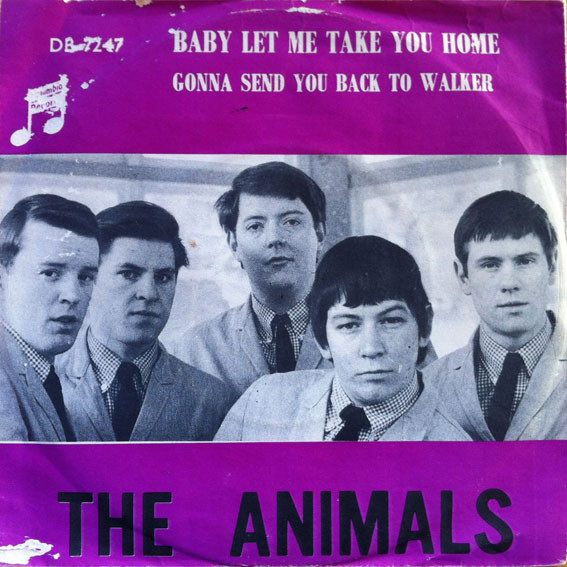 In 1966, Paul revealed in an interview his desire to return to this theme in a Beatles song. “I like some of the things The Animals try to do, like the song Eric Burdon wrote about places in Newcastle on the flip of one of their hits. I still want to write a song about the places in Liverpool where I was brought up. Places like The Docker's Umbrella, which is a long tunnel through which the dockers go to work on Merseyside, and Penny Lane near my old home." The song Paul was undoubtedly referring to was "Gonna Send You Back To Walker," this being the first song by The Animals to chart in the Top 100 on the US Billboard chart (at #57) as the b-side to "Baby Let Me Take You Home," which only reached #102 in America. In 1966, Paul revealed in an interview his desire to return to this theme in a Beatles song. “I like some of the things The Animals try to do, like the song Eric Burdon wrote about places in Newcastle on the flip of one of their hits. I still want to write a song about the places in Liverpool where I was brought up. Places like The Docker's Umbrella, which is a long tunnel through which the dockers go to work on Merseyside, and Penny Lane near my old home." The song Paul was undoubtedly referring to was "Gonna Send You Back To Walker," this being the first song by The Animals to chart in the Top 100 on the US Billboard chart (at #57) as the b-side to "Baby Let Me Take You Home," which only reached #102 in America.
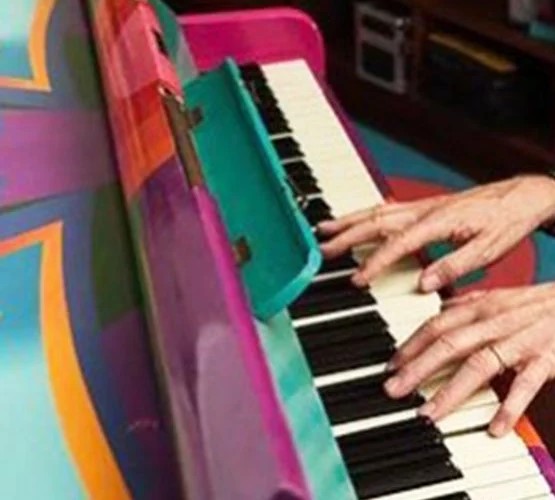 Barry Miles, in the book “Many Years From Now,” explains that “Paul wrote 'Penny Lane' in the music room at Cavendish Avenue, on the piano which had recently been painted with its psychedelic rainbow by David Vaughan,” which he then brings out was delivered “in December of 1966.” Since the song was first premiered in EMI Studios in late December of that year, we can conclude that the song was written in its entirety in that month. Barry Miles, in the book “Many Years From Now,” explains that “Paul wrote 'Penny Lane' in the music room at Cavendish Avenue, on the piano which had recently been painted with its psychedelic rainbow by David Vaughan,” which he then brings out was delivered “in December of 1966.” Since the song was first premiered in EMI Studios in late December of that year, we can conclude that the song was written in its entirety in that month.
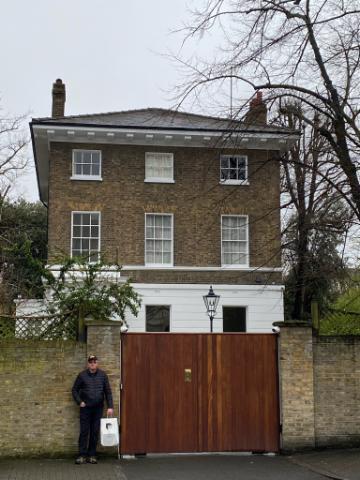 In the same book, Paul explains how the song was written with John in the third floor music room of McCartney's home at 7 Cavendish Avenue, London: “When I came to write it, John came over and helped me with the third verse, as often was the case. We were writing childhood memories: recently faded memories from eight or ten years before, so it was a recent nostalgia, pleasant memories for both of us. All the places were still there, and because we remembered it so clearly we could have gone on.” John himself relates: “We really got into the groove of imagining Penny Lane, you know - the bank was there, and that was where the tram sheds were and people waiting and the inspector stood there, the fire engines were down there. It was just reliving childhood.” In John's Playboy interview of 1980, he concurs about his input in writing the song: “I wrote some of the lyrics. I can't remember which. It was all Paul's melody.” In the same book, Paul explains how the song was written with John in the third floor music room of McCartney's home at 7 Cavendish Avenue, London: “When I came to write it, John came over and helped me with the third verse, as often was the case. We were writing childhood memories: recently faded memories from eight or ten years before, so it was a recent nostalgia, pleasant memories for both of us. All the places were still there, and because we remembered it so clearly we could have gone on.” John himself relates: “We really got into the groove of imagining Penny Lane, you know - the bank was there, and that was where the tram sheds were and people waiting and the inspector stood there, the fire engines were down there. It was just reliving childhood.” In John's Playboy interview of 1980, he concurs about his input in writing the song: “I wrote some of the lyrics. I can't remember which. It was all Paul's melody.”
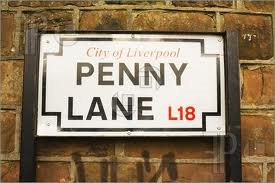 “Penny Lane is not only a street but it's a district,” explained Paul in 1980, “a suburban district where, until age four, I lived with my mother and father. So I was the only Beatle that lived in Penny Lane.” John begs to differ about this point: “Penny Lane is a suburban district where I lived with my mother and father up until the age of four...It was one of those row houses like they always picture in the early Beatles' life stories and in 'Yellow Submarine' – you know, drooly versions of the four working-class lads.” “Penny Lane is not only a street but it's a district,” explained Paul in 1980, “a suburban district where, until age four, I lived with my mother and father. So I was the only Beatle that lived in Penny Lane.” John begs to differ about this point: “Penny Lane is a suburban district where I lived with my mother and father up until the age of four...It was one of those row houses like they always picture in the early Beatles' life stories and in 'Yellow Submarine' – you know, drooly versions of the four working-class lads.”
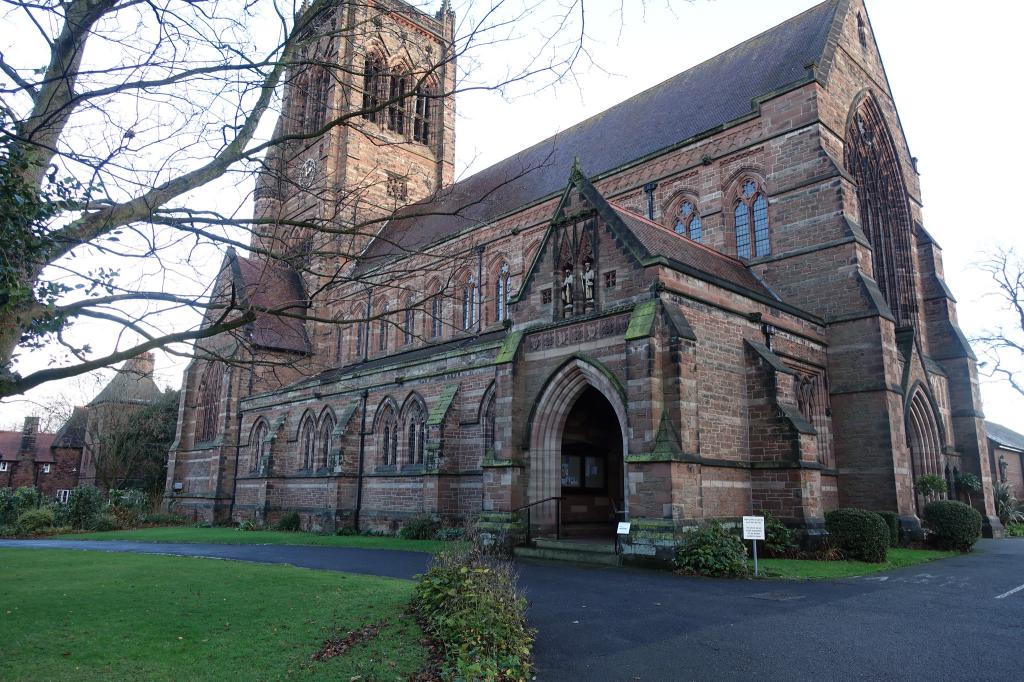 Paul continues: “A lot of our formative years were spent walking around those places. Penny Lane was the depot I had to change buses at to get from my house to John's and to a lot of my friends. It was a big bus terminal which we all knew very well.” In his 2021 book "The Lyrics," Paul adds: "There's a documentary aspect to 'Penny Lane,' though it's best viewed perhaps as a docu-drama. Which is not so strange, since, when I was going to John's house in Liverpool, I would change buses at the Penny Lane roundabout, where Church Road meets Smithdown Road. As well as being a bus terminal, and a place that featured very much in my life and in John's life - we would often meet there - it was near St. Barnabas Church, where I was a choirboy. So it resonates in several ways; it's still 'in my ears and in my eyes.'" Paul continues: “A lot of our formative years were spent walking around those places. Penny Lane was the depot I had to change buses at to get from my house to John's and to a lot of my friends. It was a big bus terminal which we all knew very well.” In his 2021 book "The Lyrics," Paul adds: "There's a documentary aspect to 'Penny Lane,' though it's best viewed perhaps as a docu-drama. Which is not so strange, since, when I was going to John's house in Liverpool, I would change buses at the Penny Lane roundabout, where Church Road meets Smithdown Road. As well as being a bus terminal, and a place that featured very much in my life and in John's life - we would often meet there - it was near St. Barnabas Church, where I was a choirboy. So it resonates in several ways; it's still 'in my ears and in my eyes.'"
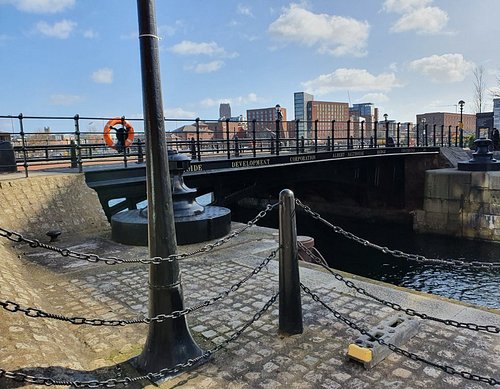 The Penny Lane district is thought to have been named after James Penny, who was a slave trader in the 18th century. The evidence for this, however, is inconclusive, especially since early maps of the area identify this district as "Penny Lane" some 20 or 30 years before James Penny arrived there. Moreover, long-time residents recall a time when it cost a penny to cross a nearby bridge, this claim being the reason for the district's name. The Penny Lane district is thought to have been named after James Penny, who was a slave trader in the 18th century. The evidence for this, however, is inconclusive, especially since early maps of the area identify this district as "Penny Lane" some 20 or 30 years before James Penny arrived there. Moreover, long-time residents recall a time when it cost a penny to cross a nearby bridge, this claim being the reason for the district's name.
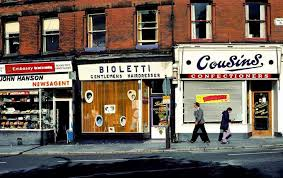 In his book "Many Years From Now," Paul continues: "There was a barber shop called Bioletti's with head shots of the haircuts you can have in the window and I just took it all and arted it up a little bit to make it sound like he was having a picture exhibition in his window." In his book "The Lyrics," Paul adds: "The line about 'a barber showing photographs' is still amusing to me, because it's as if the barbershop is a gallery that shows pairtings. There's an exhibition in his window. You'd look at the photos in the barber's window and then go in and say, 'I'll have a Tony Curtis' or 'I'll have a crew cut.' I thought 'showing photographs' was a good choice of words. All I'm saying is there's a barbershop and the barber has photos of haircuts in this window, but that would be too mundane. The shop in Penny Lane was owned by Harry Bioletti. It was an Italian barbershop complete with the striped pole outside it. All the members of The Beatles had our hair cut there at one time or another. 'Of every head he's had the pleasure to know' is a line that uses a device my old English teacher would refer to as 'free indirect speech.' You can hear the barber say, 'It's been a pleasure to know you' or something like that. So it's a wonderfully succinct way of delivering information. It crams a lot in." In his book "Many Years From Now," Paul continues: "There was a barber shop called Bioletti's with head shots of the haircuts you can have in the window and I just took it all and arted it up a little bit to make it sound like he was having a picture exhibition in his window." In his book "The Lyrics," Paul adds: "The line about 'a barber showing photographs' is still amusing to me, because it's as if the barbershop is a gallery that shows pairtings. There's an exhibition in his window. You'd look at the photos in the barber's window and then go in and say, 'I'll have a Tony Curtis' or 'I'll have a crew cut.' I thought 'showing photographs' was a good choice of words. All I'm saying is there's a barbershop and the barber has photos of haircuts in this window, but that would be too mundane. The shop in Penny Lane was owned by Harry Bioletti. It was an Italian barbershop complete with the striped pole outside it. All the members of The Beatles had our hair cut there at one time or another. 'Of every head he's had the pleasure to know' is a line that uses a device my old English teacher would refer to as 'free indirect speech.' You can hear the barber say, 'It's been a pleasure to know you' or something like that. So it's a wonderfully succinct way of delivering information. It crams a lot in."
 "It was all based on real things," Paul continues in his book "Many Years From Now." "There was a bank on the corner so I imagined the banker, it was not a real person, and his slightly dubious habits and the little children laughing at him, and the pouring rain. The fire station was a bit of poetic license; there's a fire station about half a mile down the road, not actually in Penny Lane, but we needed a third verse so we took that and I was very pleased with the line 'It's a clean machine.' I still like that as a phrase, you occasionally hit a lucky little phrase and it becomes more than a phrase. So the banker and the barber shop and the fire station were all real locations.” "It was all based on real things," Paul continues in his book "Many Years From Now." "There was a bank on the corner so I imagined the banker, it was not a real person, and his slightly dubious habits and the little children laughing at him, and the pouring rain. The fire station was a bit of poetic license; there's a fire station about half a mile down the road, not actually in Penny Lane, but we needed a third verse so we took that and I was very pleased with the line 'It's a clean machine.' I still like that as a phrase, you occasionally hit a lucky little phrase and it becomes more than a phrase. So the banker and the barber shop and the fire station were all real locations.”
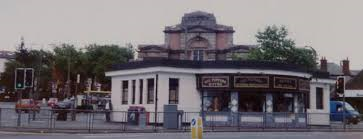 As for the “shelter in the middle of the roundabout,” Barry Miles describes it as “at Smithdown Place, known to the locals as the Penny Lane Roundabout...It is now occupied by a cafe, but was then used as a place to meet people or shelter while waiting for a bus.” Paul describes this shelter as a place where him and John would often meet. “That was where someone would stand and sell you poppies each year on British Legion poppy day; where John and I would put a shilling in the can and get ourselves a poppy. That was a memory. We fantasized the nurse 'selling poppies from a tray,' which Americans used to think was puppies! Which again is an interesting image.” As of 2023, the cafe, or bistro, that once was this shelter, is in a state of disrepair. As for the “shelter in the middle of the roundabout,” Barry Miles describes it as “at Smithdown Place, known to the locals as the Penny Lane Roundabout...It is now occupied by a cafe, but was then used as a place to meet people or shelter while waiting for a bus.” Paul describes this shelter as a place where him and John would often meet. “That was where someone would stand and sell you poppies each year on British Legion poppy day; where John and I would put a shilling in the can and get ourselves a poppy. That was a memory. We fantasized the nurse 'selling poppies from a tray,' which Americans used to think was puppies! Which again is an interesting image.” As of 2023, the cafe, or bistro, that once was this shelter, is in a state of disrepair.
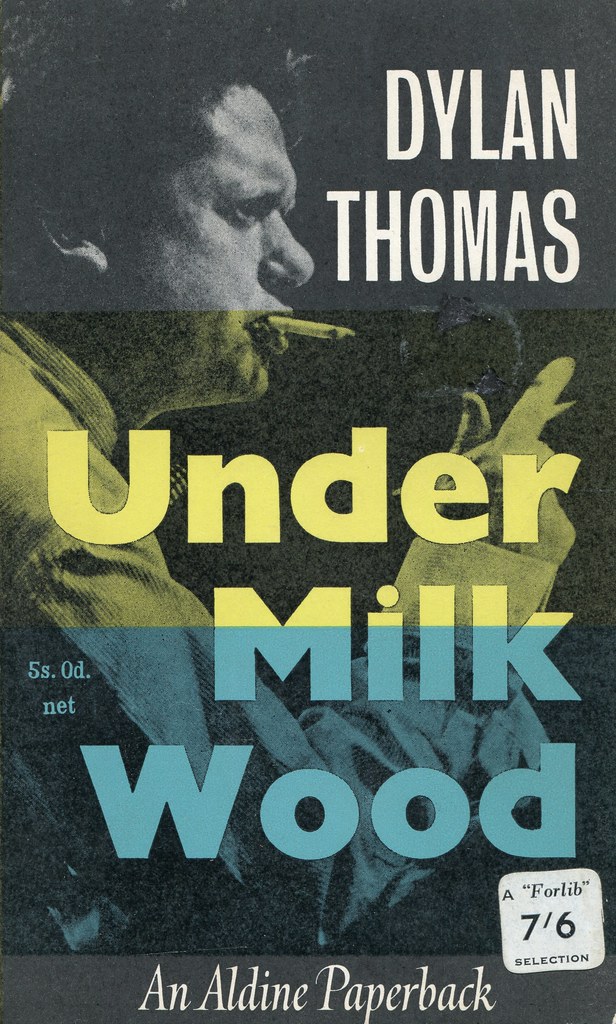 As for the phrase "she feels as if she's in a play / she is anyway," Paul describes that as "very sixties" in his book "The Lyrics," adding: "It's a commentary on its own method. If I were going to write a play about these characters, I'd rather have it be like a Harold Pinter play than something a bit straighter. I like the idea that they're a bit wonky, all these characters. There's something a bit strange about them...I'm certain Dylan Thomas's 'Under Milk Wood' was a big influence too. It was a radio drama, a portait of a Welsh town through a cast of characters. It was first done in 1953, but there had been a new radio version of it in 1963 and a television version in 1964. So it was very much in the air." As for the phrase "she feels as if she's in a play / she is anyway," Paul describes that as "very sixties" in his book "The Lyrics," adding: "It's a commentary on its own method. If I were going to write a play about these characters, I'd rather have it be like a Harold Pinter play than something a bit straighter. I like the idea that they're a bit wonky, all these characters. There's something a bit strange about them...I'm certain Dylan Thomas's 'Under Milk Wood' was a big influence too. It was a radio drama, a portait of a Welsh town through a cast of characters. It was first done in 1953, but there had been a new radio version of it in 1963 and a television version in 1964. So it was very much in the air."
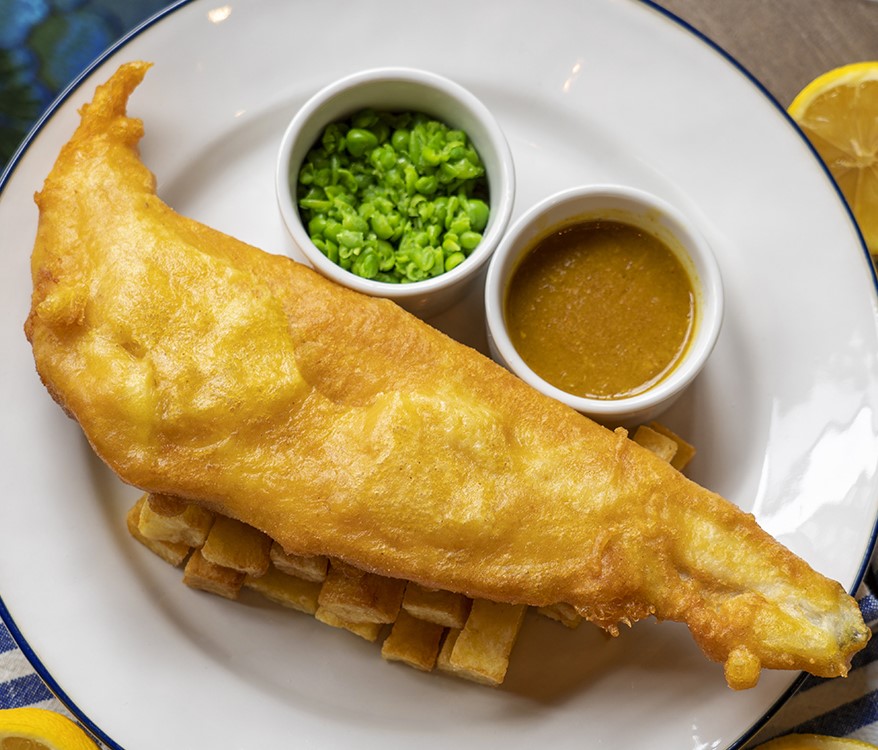 In 1967, Paul explained: “It's part fact, part nostalgia for a great place – 'blue suburban skies,' as we remember it, and it's still there. And we put in a joke or two: 'four of fish and finger pie.' The women would never dare say that, except to themselves. Most people wouldn't hear it, but 'finger pie' is just a nice little joke for the Liverpool lads who like a bit of smut.” For more clarification, “four of fish” is British slang that has reference to fourpennyworth of fish and chips, a common delicacy of the area. While “finger pie” was indeed local slang that referred to intimate fondling between teenagers in that shelter, the lyrical pairing of “fish and finger” is thought by many to be a pun on “fish fingers,” the British equivalent to what is more commonly known as "fish sticks." In 1967, Paul explained: “It's part fact, part nostalgia for a great place – 'blue suburban skies,' as we remember it, and it's still there. And we put in a joke or two: 'four of fish and finger pie.' The women would never dare say that, except to themselves. Most people wouldn't hear it, but 'finger pie' is just a nice little joke for the Liverpool lads who like a bit of smut.” For more clarification, “four of fish” is British slang that has reference to fourpennyworth of fish and chips, a common delicacy of the area. While “finger pie” was indeed local slang that referred to intimate fondling between teenagers in that shelter, the lyrical pairing of “fish and finger” is thought by many to be a pun on “fish fingers,” the British equivalent to what is more commonly known as "fish sticks."
The original handwritten lyric sheet contains a line that was eventually improved upon concerning the barber. "It was easy not to go - he was very slow" was replaced with "All the people that come and go / stop and say 'hello.'"
Recording History
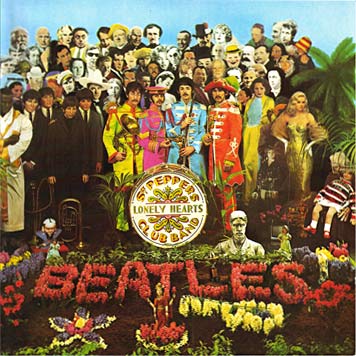 December 29th, 1966, was the first day allocated for work on "Penny Lane," this being done in EMI Studio Two starting at around 7 pm. It was the third song brought into the studio with the intention of being part of their next album, which eventually became "Sgt. Pepper's Lonely Hearts Club Band." However, neither this song nor John's "Strawberry Fields Forever" ended up on the album, as we'll explain later. December 29th, 1966, was the first day allocated for work on "Penny Lane," this being done in EMI Studio Two starting at around 7 pm. It was the third song brought into the studio with the intention of being part of their next album, which eventually became "Sgt. Pepper's Lonely Hearts Club Band." However, neither this song nor John's "Strawberry Fields Forever" ended up on the album, as we'll explain later.
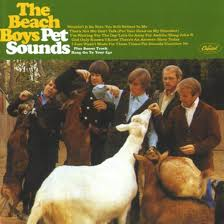 With their new-found freedom to take their time in the recording studio and get things exactly the way they wanted them, a new approach was instituted for recording “Penny Lane.” In his book “Here, There And Everywhere,” engineer Geoff Emerick explains: “One of Paul McCartney's favorite albums of 1966 was The Beach Boys' 'Pet Sounds,' and he often played it on his portable gramophone during breaks, so it wasn't altogether unsurprising when he announced that he wanted a 'really clean American sound' on...'Penny Lane.' I'd spent a lot of time mastering American records, and I was convinced that the best way to give Paul what he wanted was to record each instrument totally on its own so that there would be no leakage (or 'bleed,' as it was known) whatsoever. Paul's trust in me was such that he simply said offhandedly, 'Okay, well, let's do it that way, then.'” With their new-found freedom to take their time in the recording studio and get things exactly the way they wanted them, a new approach was instituted for recording “Penny Lane.” In his book “Here, There And Everywhere,” engineer Geoff Emerick explains: “One of Paul McCartney's favorite albums of 1966 was The Beach Boys' 'Pet Sounds,' and he often played it on his portable gramophone during breaks, so it wasn't altogether unsurprising when he announced that he wanted a 'really clean American sound' on...'Penny Lane.' I'd spent a lot of time mastering American records, and I was convinced that the best way to give Paul what he wanted was to record each instrument totally on its own so that there would be no leakage (or 'bleed,' as it was known) whatsoever. Paul's trust in me was such that he simply said offhandedly, 'Okay, well, let's do it that way, then.'”
 Standard procedure usually had been that The Beatles would lay down a rhythm track together and then, with this accomplished, all overdubs would be added on top to create the finished recording. This was to change dramatically for this song. “Unlike any other Beatles track recorded to that point,” Geoff Emerick continues, “it started with Paul playing piano, not with the four of them playing a rhythm track together; every single part except the main piano piece was an overdub. For days, the others sat at the back of the studio watching Paul layer keyboard after keyboard, working completely on his own. As always, his sense of timing was absolutely superb: the main piano part that everything was built on was rock solid despite the fact that there were no electronic metronomes to lay down click tracks in those days. In fact, Ringo wasn't even employed to tap out a beat on the hi-hat. It was that bedrock of Paul's original piano track that gave the whole song such a great feel.” Standard procedure usually had been that The Beatles would lay down a rhythm track together and then, with this accomplished, all overdubs would be added on top to create the finished recording. This was to change dramatically for this song. “Unlike any other Beatles track recorded to that point,” Geoff Emerick continues, “it started with Paul playing piano, not with the four of them playing a rhythm track together; every single part except the main piano piece was an overdub. For days, the others sat at the back of the studio watching Paul layer keyboard after keyboard, working completely on his own. As always, his sense of timing was absolutely superb: the main piano part that everything was built on was rock solid despite the fact that there were no electronic metronomes to lay down click tracks in those days. In fact, Ringo wasn't even employed to tap out a beat on the hi-hat. It was that bedrock of Paul's original piano track that gave the whole song such a great feel.”
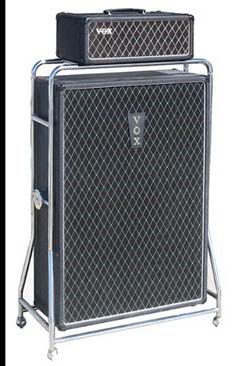 Mark Lewisohn, in his book “The Beatles Recording Sessions,” explains this day's events: “The most important contribution was the main piano piece, so Paul took great care in perfecting this, recording six takes until he was satisfied, although only the fifth and sixth were seen through to completion. This piano went onto track one of the four-track tape. Happiest with the sixth take he then began to apply the overdubs, working alone in the studio. Onto track two of the tape went another piano, played this time through a Vox guitar amplifier with added reverberation to give an entirely different sound." According to Kevin Howlett's liner notes for the 50th Anniversary release of the "Sgt. Pepper" album, the effect used on the amplifier consisted of "the tremolo control set at a low speed." Mark Lewisohn, in his book “The Beatles Recording Sessions,” explains this day's events: “The most important contribution was the main piano piece, so Paul took great care in perfecting this, recording six takes until he was satisfied, although only the fifth and sixth were seen through to completion. This piano went onto track one of the four-track tape. Happiest with the sixth take he then began to apply the overdubs, working alone in the studio. Onto track two of the tape went another piano, played this time through a Vox guitar amplifier with added reverberation to give an entirely different sound." According to Kevin Howlett's liner notes for the 50th Anniversary release of the "Sgt. Pepper" album, the effect used on the amplifier consisted of "the tremolo control set at a low speed."
Ringo was then apparently summoned to help out with the recording that went onto track three of the four-track tape. “Onto track three went yet another piano, played at half-speed and then speeded-up on replay to give another different effect. A tambourine was also shaken for this overdub." Kevin Howlett details further about the piano on track three, saying that Paul used "the studio's 'Mrs. Mills' piano - a 'prepared' instrument that produced a honky-tonk sound."
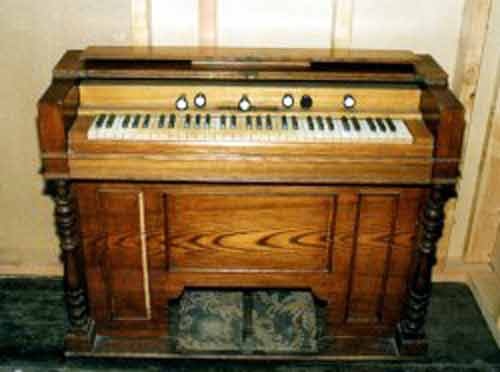 Track four, the last on the four-track tape, may very well have gotten John and George in on the act as well. “Superimposed onto track four were two-tone high-pitch whistles from a harmonium, again fed through a Vox guitar amplifier, various strange percussion effects, one of them sounding at times like a machine gun, and extremely fast and sometimes drawn-out cymbal notes.” Undoubtedly, Paul played the harmonium, these high pitched sounds being heard in the finished song a little bit in the instrumental section and overwhelmingly during the song's final ringing chord. The machine gun-like percussion effects can be heard in the second chorus and at the conclusion of the third chorus (just after the lyric “meanwhile back”) and the fast drawn-out cymbals are most noticeable in the final seconds of the song. A sampling of each isolated track of this original four-track tape can be witnessed on the PBS Special entitled "Sgt. Pepper's Musical Revolution." Track four, the last on the four-track tape, may very well have gotten John and George in on the act as well. “Superimposed onto track four were two-tone high-pitch whistles from a harmonium, again fed through a Vox guitar amplifier, various strange percussion effects, one of them sounding at times like a machine gun, and extremely fast and sometimes drawn-out cymbal notes.” Undoubtedly, Paul played the harmonium, these high pitched sounds being heard in the finished song a little bit in the instrumental section and overwhelmingly during the song's final ringing chord. The machine gun-like percussion effects can be heard in the second chorus and at the conclusion of the third chorus (just after the lyric “meanwhile back”) and the fast drawn-out cymbals are most noticeable in the final seconds of the song. A sampling of each isolated track of this original four-track tape can be witnessed on the PBS Special entitled "Sgt. Pepper's Musical Revolution."
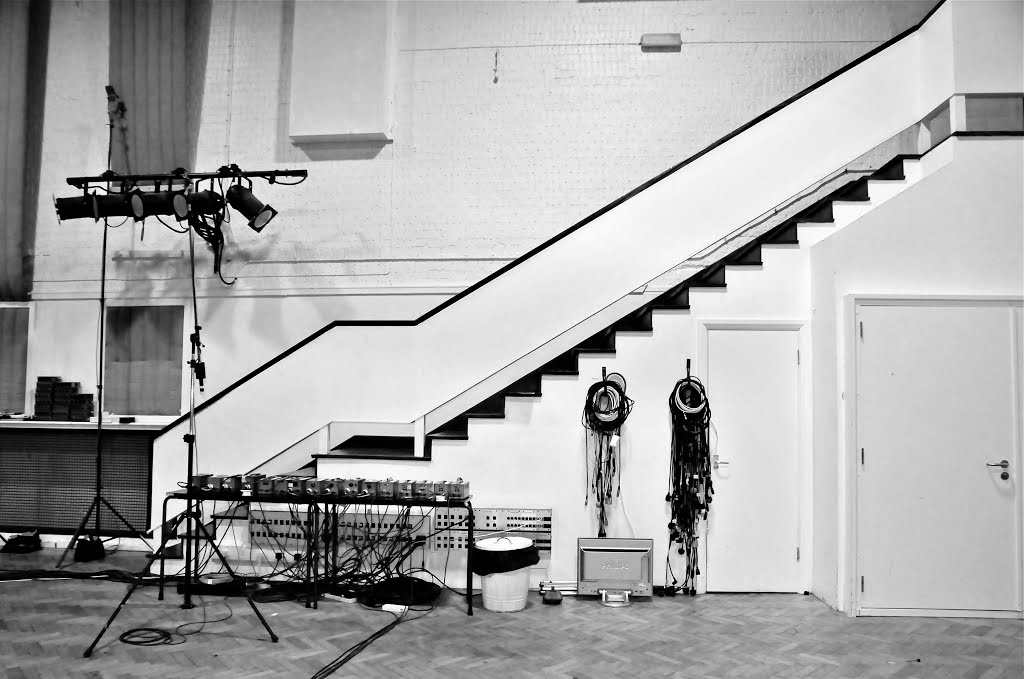 Regarding the sound effects used, Geoff Emerick relates about the “sound effects cupboard under the stairs in Studio Two. If The Beatles ever got stuck for an overdub, they'd head into that cupboard to find something – there was so much paraphernalia there: wind machines, thunder machines, bells, whistles – you name it. Whenever that door was opened, we knew that something fun was about to happen.” Upon listening to the isolated recordings contained on this first four-track tape, as included on certain editions of the 50th Anniversary release of "Sgt. Pepper," the "machine gun-like" effects sound like a sped-up drum roll and occasional cymbal crash, but this has not been verified. Regarding the sound effects used, Geoff Emerick relates about the “sound effects cupboard under the stairs in Studio Two. If The Beatles ever got stuck for an overdub, they'd head into that cupboard to find something – there was so much paraphernalia there: wind machines, thunder machines, bells, whistles – you name it. Whenever that door was opened, we knew that something fun was about to happen.” Upon listening to the isolated recordings contained on this first four-track tape, as included on certain editions of the 50th Anniversary release of "Sgt. Pepper," the "machine gun-like" effects sound like a sped-up drum roll and occasional cymbal crash, but this has not been verified.
 Probably because no vocals were recorded as of yet, the title of the song was simply “Untitled” at this point. Although there was obviously much more to be done to the song, two mono mixes were created of the day's work by producer George Martin and engineers Geoff Emerick and Phil McDonald, no doubt for acetate cutting purposes. By 2:15 the next morning, the session was finally complete. Probably because no vocals were recorded as of yet, the title of the song was simply “Untitled” at this point. Although there was obviously much more to be done to the song, two mono mixes were created of the day's work by producer George Martin and engineers Geoff Emerick and Phil McDonald, no doubt for acetate cutting purposes. By 2:15 the next morning, the session was finally complete.
 The group met up once again in EMI Studio Two later that evening, December 30th, 1966, with many overdubs in mind for “Penny Lane.” Documents show that the session began at 7 pm, but it appears that this was one of the occasions that The Beatles didn't show up until much later, as Geoff Emerick indicated about this time period. Not much was done on this day, the session beginning with engineering work being performed on the songs “When I'm Sixty-Four” and “Strawberry Fields Forever.” The book “The Beatles Recording Sessions” indicates that, when the proposed overdubs for “Penny Lane” did commence, it was already “well into the early hours of the morning.” The group met up once again in EMI Studio Two later that evening, December 30th, 1966, with many overdubs in mind for “Penny Lane.” Documents show that the session began at 7 pm, but it appears that this was one of the occasions that The Beatles didn't show up until much later, as Geoff Emerick indicated about this time period. Not much was done on this day, the session beginning with engineering work being performed on the songs “When I'm Sixty-Four” and “Strawberry Fields Forever.” The book “The Beatles Recording Sessions” indicates that, when the proposed overdubs for “Penny Lane” did commence, it was already “well into the early hours of the morning.”
 The first order of business with “Penny Lane” was to make a reduction mix of all four tracks of the previous day's take onto just 'track one' of a new tape, clearing three open tracks for more overdubs. This new reduction mix turned 'take six' into 'take seven.' “Four-track recording was a real limitation with this particular song,” Geoff Emerick relates in his book "Here, There And Everywhere," “so we were constantly having to bounce tracks together and do reductions (which we sometimes called 'premixes'). In the end, there were so many keyboards blended together, they ended up becoming a sound of their own; listening to the finished recording, it's hard to pick out individual instruments. Some of the overdubs even got buried altogether because of the density of the instrumentation and the number of bounces. Nonetheless, 'Penny Lane' contains a lot of great sounds.” The first order of business with “Penny Lane” was to make a reduction mix of all four tracks of the previous day's take onto just 'track one' of a new tape, clearing three open tracks for more overdubs. This new reduction mix turned 'take six' into 'take seven.' “Four-track recording was a real limitation with this particular song,” Geoff Emerick relates in his book "Here, There And Everywhere," “so we were constantly having to bounce tracks together and do reductions (which we sometimes called 'premixes'). In the end, there were so many keyboards blended together, they ended up becoming a sound of their own; listening to the finished recording, it's hard to pick out individual instruments. Some of the overdubs even got buried altogether because of the density of the instrumentation and the number of bounces. Nonetheless, 'Penny Lane' contains a lot of great sounds.”
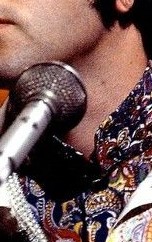 The only overdubs they got around to recording on this day were Paul's lead vocals and John's backing vocals (heard during the second line of the choruses), both of which were placed on 'track four' of the new tape. The same engineering team of George Martin, Geoff Emerick and Phil McDonald then made a pair of mono mixes of this song for Paul to review. Since the time had reached 3 am on what was now New Years Eve, the session ended not only for the day but for the year, holding off the rest of their overdub ideas until 1967. The only overdubs they got around to recording on this day were Paul's lead vocals and John's backing vocals (heard during the second line of the choruses), both of which were placed on 'track four' of the new tape. The same engineering team of George Martin, Geoff Emerick and Phil McDonald then made a pair of mono mixes of this song for Paul to review. Since the time had reached 3 am on what was now New Years Eve, the session ended not only for the day but for the year, holding off the rest of their overdub ideas until 1967.
 On January 4th, 1967, the group resumed work on “Penny Lane” to start off the new year. Documents show that this session, which was in EMI Studio Two, began at 7 pm once again, the overdubs made on this day filling up the two open tracks of the tape. Onto track two was yet another piano part, this one performed by John, and a guitar part played by George, which is barely discernible on the finished recording. Onto track three Paul overdubed his lead vocals. Although all four tracks of the tape were filled, no tape reduction was done at the end of the session, which may indicate that they may not have been quite happy yet with what was done on this day. At 2:45 am the next morning, their first session of 1967 was complete. On January 4th, 1967, the group resumed work on “Penny Lane” to start off the new year. Documents show that this session, which was in EMI Studio Two, began at 7 pm once again, the overdubs made on this day filling up the two open tracks of the tape. Onto track two was yet another piano part, this one performed by John, and a guitar part played by George, which is barely discernible on the finished recording. Onto track three Paul overdubed his lead vocals. Although all four tracks of the tape were filled, no tape reduction was done at the end of the session, which may indicate that they may not have been quite happy yet with what was done on this day. At 2:45 am the next morning, their first session of 1967 was complete.
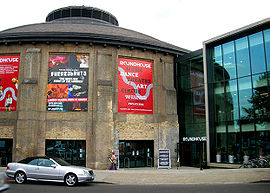 Later that day, January 5th, 1967, The Beatles once again met sometime after 7 pm in EMI Studio Two for another recording session. It appears, however, that the primary purpose of this session was to create what turned out to be a sound effects tape intended to be played at an upcoming “happening” called “Carnival Of Light.” Paul was approached by friend David Vaughan and asked if The Beatles would record some experimental music that could be played at this event at the Roundhouse in London. Most of this day's session was devoted to this project. However, Paul first decided to replace his lead vocal overdubbing for “Penny Lane” done on the previous day, this new performance also being contained on 'track three' of the tape. By 12:15 am, this session was also complete for the day. Later that day, January 5th, 1967, The Beatles once again met sometime after 7 pm in EMI Studio Two for another recording session. It appears, however, that the primary purpose of this session was to create what turned out to be a sound effects tape intended to be played at an upcoming “happening” called “Carnival Of Light.” Paul was approached by friend David Vaughan and asked if The Beatles would record some experimental music that could be played at this event at the Roundhouse in London. Most of this day's session was devoted to this project. However, Paul first decided to replace his lead vocal overdubbing for “Penny Lane” done on the previous day, this new performance also being contained on 'track three' of the tape. By 12:15 am, this session was also complete for the day.
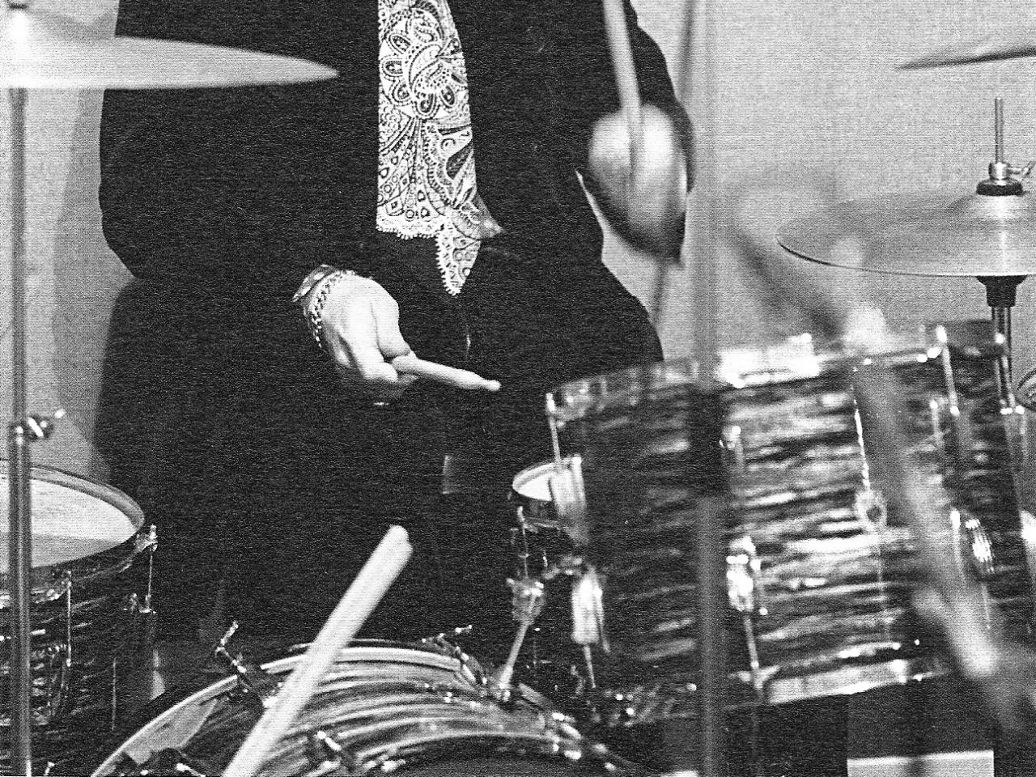 The following day, January 6th, 1967, they reconvened in EMI Studio Two at around 7 pm. This time they were not distracted by other projects but focused entirely on adding overdubs to “Penny Lane.” Up to this point, the only primary instrument recorded for the song was piano, albeit mostly piano tracks overdubbed on top of each other. Today, however, they took to adding more key elements, namely Paul on bass guitar, John on rhythm guitar, and Ringo's main drum part. “None of the instruments were taped pure,” says Mark Lewisohn's book “The Beatles Recording Sessions,” “being heavily limited by engineer Geoff Emerick and recorded at 47 1/2 cycles to speed up on replay.” The following day, January 6th, 1967, they reconvened in EMI Studio Two at around 7 pm. This time they were not distracted by other projects but focused entirely on adding overdubs to “Penny Lane.” Up to this point, the only primary instrument recorded for the song was piano, albeit mostly piano tracks overdubbed on top of each other. Today, however, they took to adding more key elements, namely Paul on bass guitar, John on rhythm guitar, and Ringo's main drum part. “None of the instruments were taped pure,” says Mark Lewisohn's book “The Beatles Recording Sessions,” “being heavily limited by engineer Geoff Emerick and recorded at 47 1/2 cycles to speed up on replay.”
Also overdubbed at this point was John on conga drums, which was also limited and slowed down. “He just tapped idly on a couple of conga drums,” Geoff Emerick explains. “He actually liked doing that kind of thing because he could loon around; he never treated the recording process all that seriously. Overdubbing different kinds of instruments, things other than his normal six-string Rickenbacker electric or Gibson acoustic guitar, provided light relief for him: if he didn't have much to do, he'd get bored easily.”
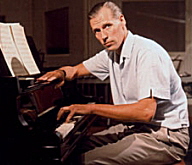 All four tracks of the four-track tape were now full again, which meant yet another tape reduction was needed. This having been done, "take seven" now became "take eight,"with two open tracks available for more overdubbing. Interestingly, both John and George Martin overdubbed more pianos onto the recording (which now totaled six pianos on the song), as well as handclaps (undoubtedly by all four Beatles) and, during the instrumental break, John, Paul and George humorously scat singing where they knew brass instruments would be overdubbed later. A good portion of this handclap and scat singing overdub can be heard on the "Super Deluxe Edition" box set of the "Sgt. Pepper" album along with another interesting overdub flown in which we'll detail later. This again filled up the new four-track tape, another tape reduction being made at the end of the session to vacate two more tracks for future overdubbing. The session was complete at 1 am, this being a much more productive day for a single song that was becoming quite a lengthy project. All four tracks of the four-track tape were now full again, which meant yet another tape reduction was needed. This having been done, "take seven" now became "take eight,"with two open tracks available for more overdubbing. Interestingly, both John and George Martin overdubbed more pianos onto the recording (which now totaled six pianos on the song), as well as handclaps (undoubtedly by all four Beatles) and, during the instrumental break, John, Paul and George humorously scat singing where they knew brass instruments would be overdubbed later. A good portion of this handclap and scat singing overdub can be heard on the "Super Deluxe Edition" box set of the "Sgt. Pepper" album along with another interesting overdub flown in which we'll detail later. This again filled up the new four-track tape, another tape reduction being made at the end of the session to vacate two more tracks for future overdubbing. The session was complete at 1 am, this being a much more productive day for a single song that was becoming quite a lengthy project.
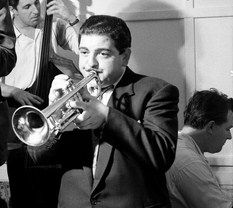 The Beatles took off for the weekend, but George Martin was kept busy by Paul for these two days. “Paul had very definite thoughts about the instrumentation he wanted on 'Penny Lane,'” relates Geoff Emerick. “George Martin was tasked with creating an arrangement for flutes, trumpets, piccolo, and flugelhorn, to which were added oboes, cor anglais (English horn), and bowed double bass.” So, when Monday came around, January 9th, 1967, the session at EMI Studio Two was used for overdubbing the first portion of these classical instruments, using the score that George Martin had come up with over the weekend. The Beatles took off for the weekend, but George Martin was kept busy by Paul for these two days. “Paul had very definite thoughts about the instrumentation he wanted on 'Penny Lane,'” relates Geoff Emerick. “George Martin was tasked with creating an arrangement for flutes, trumpets, piccolo, and flugelhorn, to which were added oboes, cor anglais (English horn), and bowed double bass.” So, when Monday came around, January 9th, 1967, the session at EMI Studio Two was used for overdubbing the first portion of these classical instruments, using the score that George Martin had come up with over the weekend.
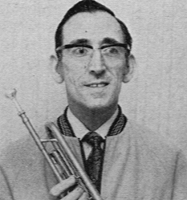 Four flautists and two trumpeters (Leon Calvert and Freddie Clayton) were recorded on this day, three of these musicians also overdubbing piccolos and a flugelhorn. Two mono mixes were made at the end of the day by the usual engineering team of Martin, Emerick and McDonald, no doubt to allow Paul to inspect the recording of the song thus far. By 1:45 am, the session was complete. Four flautists and two trumpeters (Leon Calvert and Freddie Clayton) were recorded on this day, three of these musicians also overdubbing piccolos and a flugelhorn. Two mono mixes were made at the end of the day by the usual engineering team of Martin, Emerick and McDonald, no doubt to allow Paul to inspect the recording of the song thus far. By 1:45 am, the session was complete.
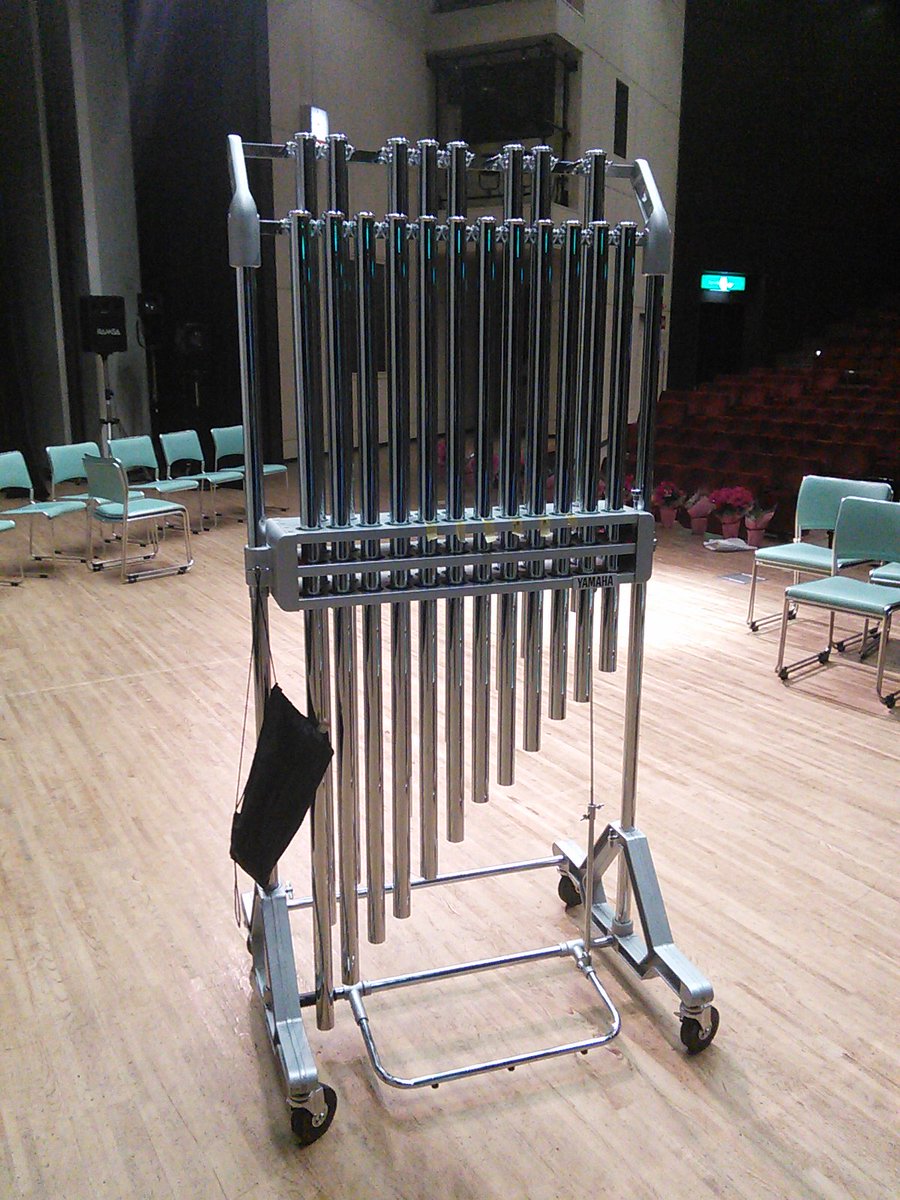 Yet another “Penny Lane” session was booked for the following day, January 10th, 1967, this time in EMI Studio Three. Sometime after the usual 7 pm The Beatles arrived for what amounted to a not-too-productive day. “The Beatles Recording Sessions” book describes the results of this day's work as “superimpositions of various effects including scat harmonies and a hand-bell, taken from the trap room and shaken whenever the lyrics mentioned the fireman or his fire-engine.” In actuality, as Paul demonstrated in video footage from the 1990's, it was a set of tubular bells that were available in EMI Studios that were used on the song after the "fire engine" references, not a hand-bell. Since the session is specified to have been complete at 1:40 am the next morning, it's probably safe to say that The Beatles didn't arrive precisely at 7 pm and spend over six-and-a-half hours to record Ringo hammering a tubular bell and some “scat harmonies,” the latter of which isn't discernible in the finished recording. Or maybe it did take that long...It may have taken Ringo all that time to hit the tubular bell exactly the way Paul wanted it! Or maybe they just hung out and smoked some doobies...who am I to say? Yet another “Penny Lane” session was booked for the following day, January 10th, 1967, this time in EMI Studio Three. Sometime after the usual 7 pm The Beatles arrived for what amounted to a not-too-productive day. “The Beatles Recording Sessions” book describes the results of this day's work as “superimpositions of various effects including scat harmonies and a hand-bell, taken from the trap room and shaken whenever the lyrics mentioned the fireman or his fire-engine.” In actuality, as Paul demonstrated in video footage from the 1990's, it was a set of tubular bells that were available in EMI Studios that were used on the song after the "fire engine" references, not a hand-bell. Since the session is specified to have been complete at 1:40 am the next morning, it's probably safe to say that The Beatles didn't arrive precisely at 7 pm and spend over six-and-a-half hours to record Ringo hammering a tubular bell and some “scat harmonies,” the latter of which isn't discernible in the finished recording. Or maybe it did take that long...It may have taken Ringo all that time to hit the tubular bell exactly the way Paul wanted it! Or maybe they just hung out and smoked some doobies...who am I to say?
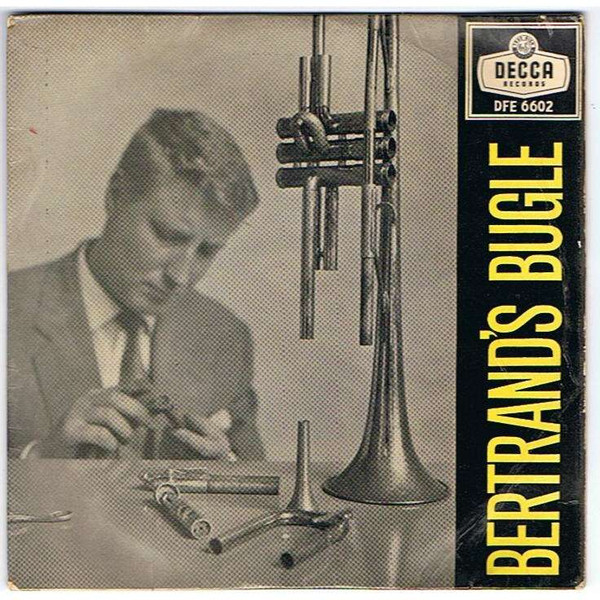 Two days later, though, on January 12th, 1967, a more productive session commenced. The second set of classical instrument overdubs took place in EMI Studio Three, between the hours of 2:30 and 11 pm. Two trumpets (including Bert Courtley), two oboes, two cor anglais and a double-bass were recorded onto "take nine" of “Penny Lane.” The bassist, Frank Clarke, relates: “They wanted me to play one note over and over, for hours.” Interestingly, it was probably at this session that a decision was made to insert a small section of the classical instruments overdub played backwards in the open section of the final chorus, this being heard on the above mentioned "Sgt. Pepper" box set. This backward instrumental section, of course, was decided against later and replaced by a final overdub which will be described below. After this session was done to satisfaction, two mono mixes were made by the usual engineering team just before the doors were closed for the evening at 11 pm. Two days later, though, on January 12th, 1967, a more productive session commenced. The second set of classical instrument overdubs took place in EMI Studio Three, between the hours of 2:30 and 11 pm. Two trumpets (including Bert Courtley), two oboes, two cor anglais and a double-bass were recorded onto "take nine" of “Penny Lane.” The bassist, Frank Clarke, relates: “They wanted me to play one note over and over, for hours.” Interestingly, it was probably at this session that a decision was made to insert a small section of the classical instruments overdub played backwards in the open section of the final chorus, this being heard on the above mentioned "Sgt. Pepper" box set. This backward instrumental section, of course, was decided against later and replaced by a final overdub which will be described below. After this session was done to satisfaction, two mono mixes were made by the usual engineering team just before the doors were closed for the evening at 11 pm.
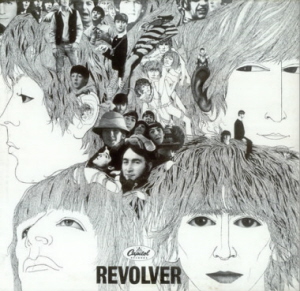 Geoff Emerick relates: “Combined with Paul's stellar bass playing and superb vocals...the track was beginning to sound full, polished, and quite finished to me.” Upon listening to the song at this point, as available in bootlegs, I'm sure that most listeners and record-buyers would have been quite impressed with these stellar results. The instrumental section, for instance (as evidenced on the compilation album “Anthology 2”), works quite well, and would be considered a good step up from their most recent album release “Revolver.” Geoff Emerick relates: “Combined with Paul's stellar bass playing and superb vocals...the track was beginning to sound full, polished, and quite finished to me.” Upon listening to the song at this point, as available in bootlegs, I'm sure that most listeners and record-buyers would have been quite impressed with these stellar results. The instrumental section, for instance (as evidenced on the compilation album “Anthology 2”), works quite well, and would be considered a good step up from their most recent album release “Revolver.”
However, Paul thought it could be improved upon. During this session, Paul kept talking about something he had seen on television the night before. He was watching “the second of a five-part, late-night BBC2 television series 'Masterworks' at home on the Wednesday evening of January 11th,” explains the book “The Beatles Recording Sessions.”
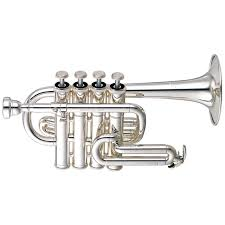 “Paul couldn't stop talking about it,” Geoff Emerick details. “'What was that tiny little trumpet that fellow was playing?' he asked us. 'I couldn't believe the sound he was making!' George Martin's classical training never came in more handy. 'That's called a piccolo trumpet,' he said, 'and the chap playing it was David Mason, who happens to be a friend of mine.' 'Fantastic!' exclaimed Paul. 'Let's get him in here and have him overdub it.'” “Paul couldn't stop talking about it,” Geoff Emerick details. “'What was that tiny little trumpet that fellow was playing?' he asked us. 'I couldn't believe the sound he was making!' George Martin's classical training never came in more handy. 'That's called a piccolo trumpet,' he said, 'and the chap playing it was David Mason, who happens to be a friend of mine.' 'Fantastic!' exclaimed Paul. 'Let's get him in here and have him overdub it.'”
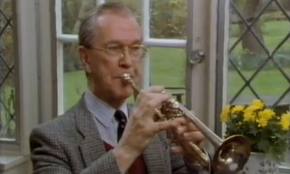 “He saw me playing Bach's Brandenburg Concerto Number 2 in F Major with the English Chamber Orchestra from Guildford Cathedral,” remembers David Mason. “The next morning I got a call and a few days later I went along to the studio.” That call was received on Friday, January 13th, 1967, and arrangements were made for him to come to a session in EMI Studio Two four days later on January 17th, 1967. The session began at the usually scheduled time of 7 pm. “He saw me playing Bach's Brandenburg Concerto Number 2 in F Major with the English Chamber Orchestra from Guildford Cathedral,” remembers David Mason. “The next morning I got a call and a few days later I went along to the studio.” That call was received on Friday, January 13th, 1967, and arrangements were made for him to come to a session in EMI Studio Two four days later on January 17th, 1967. The session began at the usually scheduled time of 7 pm.
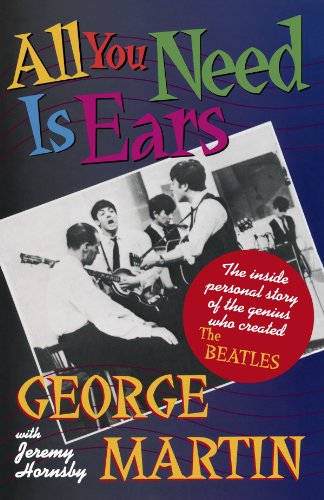 George Martin, in his book “All You Need Is Ears,” explains some technical concerns for this day's session: “Now, the normal trumpet is in B flat. But there is also the D trumpet, which is what Bach mostly used, and the F trumpet. In this case, I decided to use a B-flat piccolo trumpet, an octave above the normal..It was a difficult session, for two reasons. First, that little trumpet is a devil to play in tune, because it isn't really in tune with itself, so that in order to achieve pure notes the player has to 'lip' each one. Secondly, we had no music prepared. We just knew that we wanted little piping interjections. We had had experience of professional musicians saying: 'If The Beatles were real musicians, they'd know what they wanted us to play before we came into the studio.' Happily, David Mason wasn't like that at all. By then The Beatles were very big news anyway, and I think he was intrigued to be playing on one of their records, quite apart from being well paid for his trouble. As we came to each little section where we wanted the sound, Paul would think up the notes he wanted, and I would write them down for David. The result was unique, something that had never been done in rock music before, and it gave 'Penny Lane' a very distinct character.” George Martin, in his book “All You Need Is Ears,” explains some technical concerns for this day's session: “Now, the normal trumpet is in B flat. But there is also the D trumpet, which is what Bach mostly used, and the F trumpet. In this case, I decided to use a B-flat piccolo trumpet, an octave above the normal..It was a difficult session, for two reasons. First, that little trumpet is a devil to play in tune, because it isn't really in tune with itself, so that in order to achieve pure notes the player has to 'lip' each one. Secondly, we had no music prepared. We just knew that we wanted little piping interjections. We had had experience of professional musicians saying: 'If The Beatles were real musicians, they'd know what they wanted us to play before we came into the studio.' Happily, David Mason wasn't like that at all. By then The Beatles were very big news anyway, and I think he was intrigued to be playing on one of their records, quite apart from being well paid for his trouble. As we came to each little section where we wanted the sound, Paul would think up the notes he wanted, and I would write them down for David. The result was unique, something that had never been done in rock music before, and it gave 'Penny Lane' a very distinct character.”
 David Mason concurs: “I took nine trumpets along and we tried various things, by a process of elimination settling on the B-flat piccolo trumpet...We spent three hours working it out. Paul sang the parts he wanted, George Martin wrote them out, I tried them. But the actual recording was done quite quickly. They were jolly high notes, quite taxing, but with the tapes rolling we did two takes as overdubs on top of the existing song. I read in books that the trumpet sound was later speeded up but that isn't true because I can still play those same notes on the instrument along with the record...I've spent a lifetime playing with top orchestras yet I'm most famous for playing on 'Penny Lane'!” As for his pay, the special Musicians' Union rate of 27 pounds, 10 shillings were given for his services. David Mason concurs: “I took nine trumpets along and we tried various things, by a process of elimination settling on the B-flat piccolo trumpet...We spent three hours working it out. Paul sang the parts he wanted, George Martin wrote them out, I tried them. But the actual recording was done quite quickly. They were jolly high notes, quite taxing, but with the tapes rolling we did two takes as overdubs on top of the existing song. I read in books that the trumpet sound was later speeded up but that isn't true because I can still play those same notes on the instrument along with the record...I've spent a lifetime playing with top orchestras yet I'm most famous for playing on 'Penny Lane'!” As for his pay, the special Musicians' Union rate of 27 pounds, 10 shillings were given for his services.
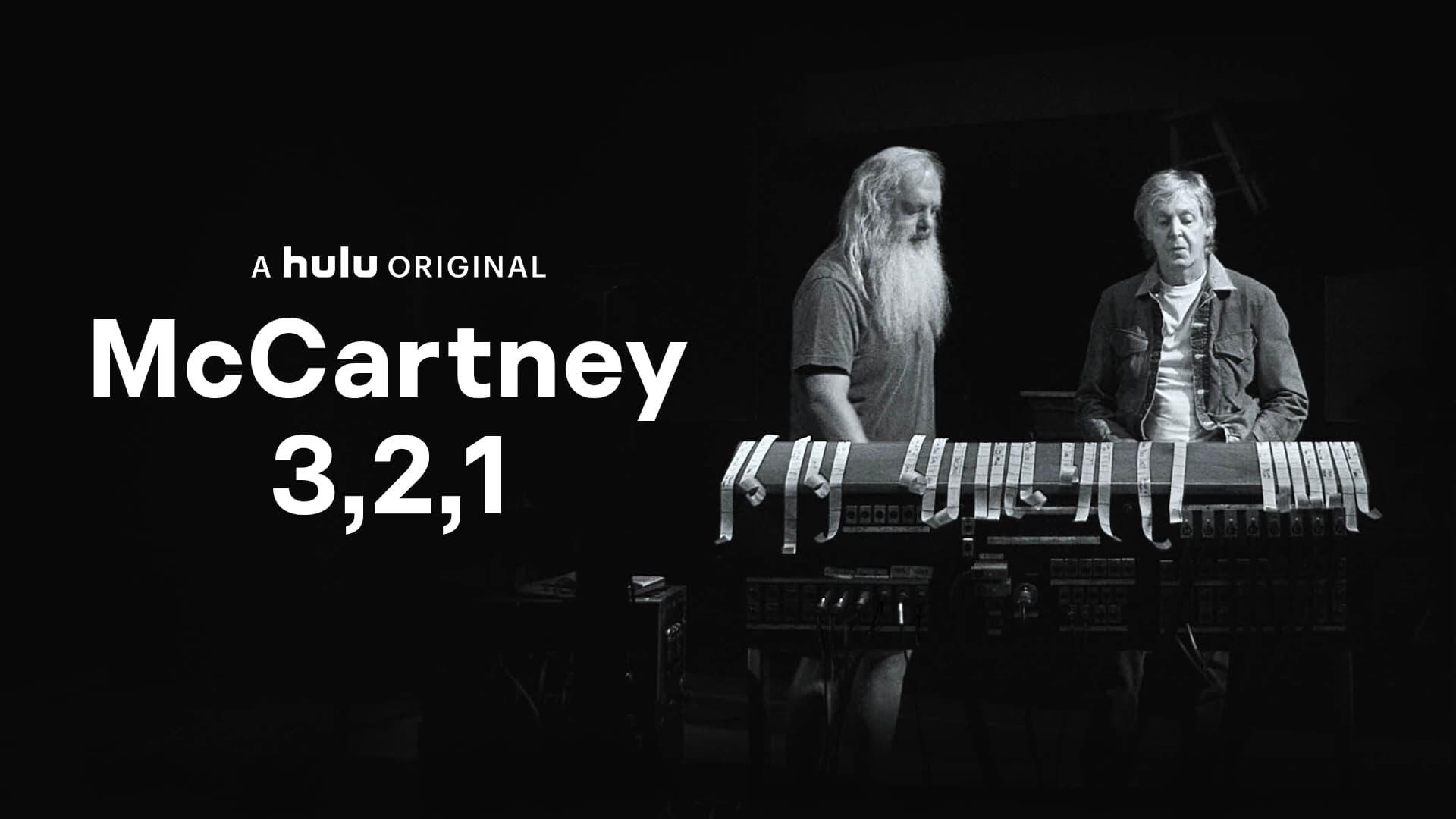 In Paul's 2021 Hulu documentary series "McCartney 3,2,1," he relates about his insistence of including "an impossible high note" at the end of the piccolo trumpet solo: "David Mason turns to me and says, 'Well, that's officially out of the range of the piccolo trumpet even.' And I kind of give him a look, like, 'eh, you can do it, y'know.' He goes, 'Ok.' So he plays it and it haunted him for the rest of his life!" In Paul's 2021 Hulu documentary series "McCartney 3,2,1," he relates about his insistence of including "an impossible high note" at the end of the piccolo trumpet solo: "David Mason turns to me and says, 'Well, that's officially out of the range of the piccolo trumpet even.' And I kind of give him a look, like, 'eh, you can do it, y'know.' He goes, 'Ok.' So he plays it and it haunted him for the rest of his life!"
 “True professional that he was,” Geoff Emerick relates, “(David) Mason played it perfectly the first time through, including the extraordinarily demanding solo which ended on a note that was almost impossibly high. It was, quite simply, the performance of his life. And everyone knew it...except, obviously, Paul. As the final note faded to silence, he reached for the talkback mic. 'Nice one, David,' Paul said matter-of-factly. 'Can we try another pass?' There was a moment of silence. 'Another pass?' The trumpeter looked up at the control room helplessly. He seemed lost for words. Finally, he said softly, 'Look, I'm sorry. I'm afraid I just can't do it any better.' Mason knew that he had nailed it, that he had played everything note-perfect and that it was a prodigious feat that he could not possibly top.” “True professional that he was,” Geoff Emerick relates, “(David) Mason played it perfectly the first time through, including the extraordinarily demanding solo which ended on a note that was almost impossibly high. It was, quite simply, the performance of his life. And everyone knew it...except, obviously, Paul. As the final note faded to silence, he reached for the talkback mic. 'Nice one, David,' Paul said matter-of-factly. 'Can we try another pass?' There was a moment of silence. 'Another pass?' The trumpeter looked up at the control room helplessly. He seemed lost for words. Finally, he said softly, 'Look, I'm sorry. I'm afraid I just can't do it any better.' Mason knew that he had nailed it, that he had played everything note-perfect and that it was a prodigious feat that he could not possibly top.”
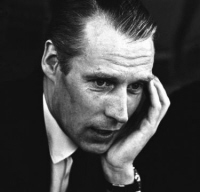 “Quickly George Martin intervened and addressed Paul emphatically, one of the few times in recent weeks that I saw him assert his authority as producer. 'Good God, you can't possibly ask the man to do that again...it's fantastic!' A dark cloud gathered over Paul's face. Even though the exchange was occurring in the privacy of the control room, out of earshot of (David) Mason and the other Beatles, George's remark clearly embarrassed and angered him...For an uncomfortable moment the producer and his headstrong young artist glared at each other. Finally, Paul returned to the talkback mic. 'Okay, thank you, David. You're free to go now, released on your own recognizance.' Handled with typical McCartney humor, the confrontation was over.” “Quickly George Martin intervened and addressed Paul emphatically, one of the few times in recent weeks that I saw him assert his authority as producer. 'Good God, you can't possibly ask the man to do that again...it's fantastic!' A dark cloud gathered over Paul's face. Even though the exchange was occurring in the privacy of the control room, out of earshot of (David) Mason and the other Beatles, George's remark clearly embarrassed and angered him...For an uncomfortable moment the producer and his headstrong young artist glared at each other. Finally, Paul returned to the talkback mic. 'Okay, thank you, David. You're free to go now, released on your own recognizance.' Handled with typical McCartney humor, the confrontation was over.”
David Mason recalls, “Although Paul seemed to be in charge, and I was the only one playing, the other three Beatles were there too. They all had funny clothes on, candy-striped trousers, floppy yellow bow ties etc. I asked Paul if they'd been filming because it really looked like they had just come off a film set. John Lennon interjected, 'Oh no mate, we always dress like this!'”
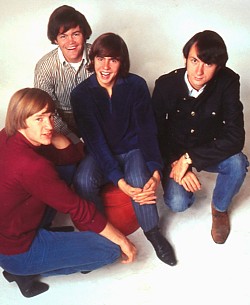 This session finally completed the recording of “Penny Lane,” three full weeks being needed to get it to its complete state, which was a huge amount of studio time for one song in those days. With this complete, three mono mixes were made of the song by the usual engineering team, the third one ('remix 11') being deemed the best at this point. A tape copy of this mono mix was made and quickly dispatched, along with a mono mix of “Strawberry Fields Forever,” to Capitol Records in the US. It had already been decided that these two songs were to be pulled from the forthcoming album and released as a long-overdue single (to divert attention back to The Beatles and away from the new teenage heartthrobs, The Monkees). Capitol quickly printed promotional copies of this new single and distributed them to radio stations across America. This session finally completed the recording of “Penny Lane,” three full weeks being needed to get it to its complete state, which was a huge amount of studio time for one song in those days. With this complete, three mono mixes were made of the song by the usual engineering team, the third one ('remix 11') being deemed the best at this point. A tape copy of this mono mix was made and quickly dispatched, along with a mono mix of “Strawberry Fields Forever,” to Capitol Records in the US. It had already been decided that these two songs were to be pulled from the forthcoming album and released as a long-overdue single (to divert attention back to The Beatles and away from the new teenage heartthrobs, The Monkees). Capitol quickly printed promotional copies of this new single and distributed them to radio stations across America.
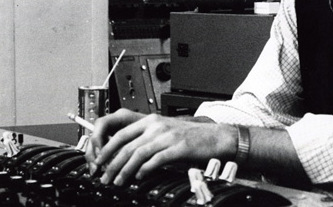 However, a decision was made to further improve on this mono mix. “After some contemplation it was decided that Mason's piccolo trumpet flourish at the very end was superfluous,” explains Geoff Emerick. “And so, a week later, the song was remixed and the piccolo removed from the end of the song.” This new mono mix was created in the control room of EMI Studio One on January 25th, 1967 between 6:30 and 8:30 pm by the usual team of George Martin, Geoff Emerick and Phil McDonald. Three attempts at this mono mix were made and the third ('remix 14') was deemed best, a tape copy of this mix being made between 9 and 10 pm on this day to be dispatched to Capitol Records in the US immediately to replace the previous mono mix. This new mono mix is the one that was released worldwide for purchase by the public. However, the aforementioned promotional copies that Capitol distributed with the rare piccolo trumpet ending was what American radio listeners became acquainted with at the time. However, a decision was made to further improve on this mono mix. “After some contemplation it was decided that Mason's piccolo trumpet flourish at the very end was superfluous,” explains Geoff Emerick. “And so, a week later, the song was remixed and the piccolo removed from the end of the song.” This new mono mix was created in the control room of EMI Studio One on January 25th, 1967 between 6:30 and 8:30 pm by the usual team of George Martin, Geoff Emerick and Phil McDonald. Three attempts at this mono mix were made and the third ('remix 14') was deemed best, a tape copy of this mix being made between 9 and 10 pm on this day to be dispatched to Capitol Records in the US immediately to replace the previous mono mix. This new mono mix is the one that was released worldwide for purchase by the public. However, the aforementioned promotional copies that Capitol distributed with the rare piccolo trumpet ending was what American radio listeners became acquainted with at the time.
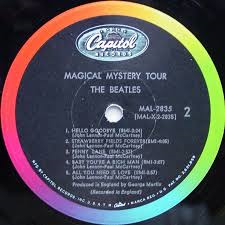 Since “Penny Lane” was not included on the “Sgt. Pepper” album as originally planned, there was no pressing need to create a stereo mix, singles being released only in mono at that point. Capitol Records decided to include the song on an album they put together entitled “Magical Mystery Tour” and, since no stereo mix was available, they created their own mock stereo version by panning the high frequencies to one channel and the low frequencies to the other channel. Since “Penny Lane” was not included on the “Sgt. Pepper” album as originally planned, there was no pressing need to create a stereo mix, singles being released only in mono at that point. Capitol Records decided to include the song on an album they put together entitled “Magical Mystery Tour” and, since no stereo mix was available, they created their own mock stereo version by panning the high frequencies to one channel and the low frequencies to the other channel.
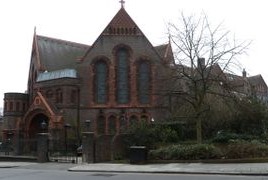 A true stereo mix was finally created on September 30th, 1971 by George Martin in his AIR Studios in London. While this mix still did not include the ending trumpet flourish from David Mason, it did include a trumpet flourish not heard before, which appears just after the phrase “clean machine.” While this new mix appeared on the UK version of the compilation album “The Beatles/1967-1970” (“The Blue Album”), it apparently didn't find its way to Capitol in the US. They, instead, created yet another mock stereo version from the mono mix they previously had, using this new mix for the American “Blue Album” release, this version having a little less treble-bass separation than the one they created for the “Magical Mystery Tour” album. A true stereo mix was finally created on September 30th, 1971 by George Martin in his AIR Studios in London. While this mix still did not include the ending trumpet flourish from David Mason, it did include a trumpet flourish not heard before, which appears just after the phrase “clean machine.” While this new mix appeared on the UK version of the compilation album “The Beatles/1967-1970” (“The Blue Album”), it apparently didn't find its way to Capitol in the US. They, instead, created yet another mock stereo version from the mono mix they previously had, using this new mix for the American “Blue Album” release, this version having a little less treble-bass separation than the one they created for the “Magical Mystery Tour” album.
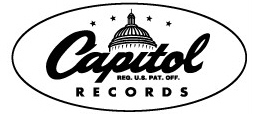 The true stereo mix finally appeared in the US on the 1980 released album “Rarities,” although Capitol artificially inserted the ending trumpet flourish to make this version a true rarity. Future Beatles compilation albums that appeared in the states, as well as all CD releases, feature the unadulterated stereo mix as created by George Martin in 1971, with a few notable exceptions as detailed below. The true stereo mix finally appeared in the US on the 1980 released album “Rarities,” although Capitol artificially inserted the ending trumpet flourish to make this version a true rarity. Future Beatles compilation albums that appeared in the states, as well as all CD releases, feature the unadulterated stereo mix as created by George Martin in 1971, with a few notable exceptions as detailed below.
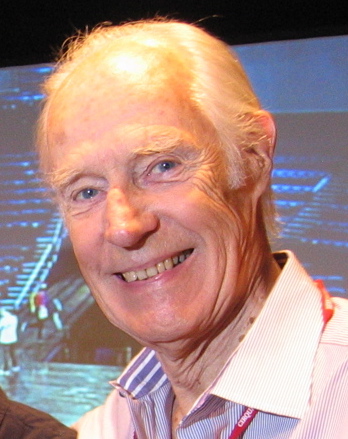 Sometime in 1995, George Martin and Geoff Emerick created yet another mix of “Penny Lane” for “Anthology 2” which combined different takes that highlight various rare or unheard elements. These include the original instrumental passage as recorded on January 9th, 1967, a single tracked vocal from Paul in the verses, the ending trumpet flourish of January 17th, 1967, and some extraneous instrumental noodling and vocal 'clowning around' that got faded out of the released version. After this ridiculous conclusion, Paul states “A suitable ending, I think!" Sometime in 1995, George Martin and Geoff Emerick created yet another mix of “Penny Lane” for “Anthology 2” which combined different takes that highlight various rare or unheard elements. These include the original instrumental passage as recorded on January 9th, 1967, a single tracked vocal from Paul in the verses, the ending trumpet flourish of January 17th, 1967, and some extraneous instrumental noodling and vocal 'clowning around' that got faded out of the released version. After this ridiculous conclusion, Paul states “A suitable ending, I think!"
 Giles Martin (son of George Martin) worked with Sam Okell at Abbey Road Studios in 2015 to create a new stereo mix of "Penny Lane" for inclusion on a re-release of the album "Beatles 1." Then again, in 2017, Giles Martin and Sam Okell paired up again to create yet another new stereo mix of "Penny Lane" for inclusion on the 50th Anniversary Editions of the "Sgt. Pepper" album, this stereo mix patterned after the released mono mix of 1967. And while they were at it, they created mixes of the first four-track tape of the song ("Take 6 - Instrumental") and the January 6th, 1967 handclaps and scat singing overdub ("Vocal Overdubs and Speech"), both of these included in various editions of the Anniversay releases for the album. Giles Martin (son of George Martin) worked with Sam Okell at Abbey Road Studios in 2015 to create a new stereo mix of "Penny Lane" for inclusion on a re-release of the album "Beatles 1." Then again, in 2017, Giles Martin and Sam Okell paired up again to create yet another new stereo mix of "Penny Lane" for inclusion on the 50th Anniversary Editions of the "Sgt. Pepper" album, this stereo mix patterned after the released mono mix of 1967. And while they were at it, they created mixes of the first four-track tape of the song ("Take 6 - Instrumental") and the January 6th, 1967 handclaps and scat singing overdub ("Vocal Overdubs and Speech"), both of these included in various editions of the Anniversay releases for the album.
“Penny Lane” was also recorded live for Paul's live album “Paul Is Live,” which was recorded sometime between March 22nd and June 15th, 1993.
Song Structure and Style
Amid all of the extravagance of the recording, "Penny Lane" follows a somewhat usual structure, this being 'verse/ verse/ chorus/ verse/ verse (instrumental)/ chorus/ verse/ verse/ chorus/ chorus' (or aabaabaabb). The lyrics are encapsulated within a lightearted swing beat, exhibiting a breezy but surreal recollection of Paul's childhood memories which can't help but engage the listener.
 Without need of an introduction, the first eight-measure verse begins immediately with a double tracked lead vocal and bass guitar first entering the landscape. The plodding and multiple-overdubbed piano keeps the tempo while bass guitar quarter-notes descend down the scale as an interesting counterpoint to the melody line Paul is singing. Chirping quarter-note flutes are quietly heard among the piano chords for the first three measures. A sudden change occurs in the fourth measure (on the word “know”) as the key changes to minor, the bass changes to holding out whole notes, and a single-note flute enters the scene for the first time. The minor key continues for the fifth and sixth measures, creating a somewhat mystical atmosphere as the flute temporarily fades away and the bass descends on whole notes as the measures change. The major key returns in the seventh and eighth measures, as does the solo flute with an echo to Paul's words “say hello.” The bass plays a cheerful riff during these final measures as a nice backdrop. Without need of an introduction, the first eight-measure verse begins immediately with a double tracked lead vocal and bass guitar first entering the landscape. The plodding and multiple-overdubbed piano keeps the tempo while bass guitar quarter-notes descend down the scale as an interesting counterpoint to the melody line Paul is singing. Chirping quarter-note flutes are quietly heard among the piano chords for the first three measures. A sudden change occurs in the fourth measure (on the word “know”) as the key changes to minor, the bass changes to holding out whole notes, and a single-note flute enters the scene for the first time. The minor key continues for the fifth and sixth measures, creating a somewhat mystical atmosphere as the flute temporarily fades away and the bass descends on whole notes as the measures change. The major key returns in the seventh and eighth measures, as does the solo flute with an echo to Paul's words “say hello.” The bass plays a cheerful riff during these final measures as a nice backdrop.
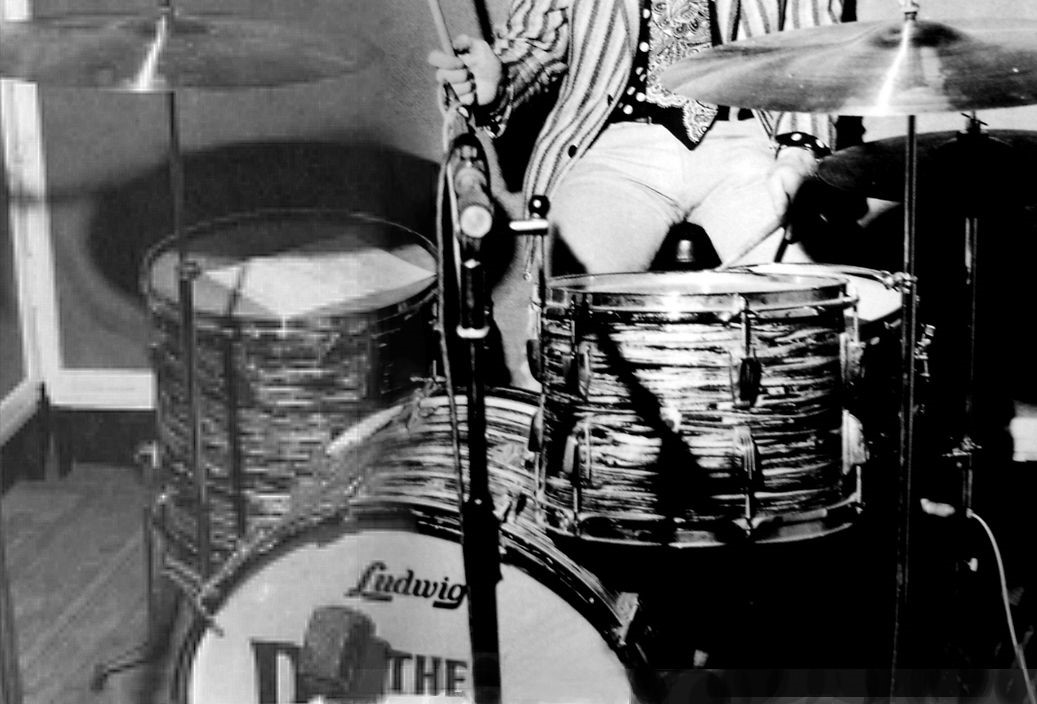 The second verse then commences which is also eight-measures in length (as they all are). The drums kick in with a simple drum pattern at this point to complete the rhythm section of the song. Otherwise, this verse is instrumentally similar to the first verse throughout except for the final measure. During the lyric “very strange,” Ringo plays three prominent accents with open hi-hat while the bass falls down the scale. All instruments stop at this point, leaving the fourth beat of this eighth measure open for Paul to highlight the song's title, which works nicely as a segue into the first chorus. The second verse then commences which is also eight-measures in length (as they all are). The drums kick in with a simple drum pattern at this point to complete the rhythm section of the song. Otherwise, this verse is instrumentally similar to the first verse throughout except for the final measure. During the lyric “very strange,” Ringo plays three prominent accents with open hi-hat while the bass falls down the scale. All instruments stop at this point, leaving the fourth beat of this eighth measure open for Paul to highlight the song's title, which works nicely as a segue into the first chorus.
 The first chorus is also eight-measures in length (as they all are) and features primarily multi-tracked piano, bass and drums. One of the overdubbed pianos, presumably the one played through a Vox amplifier with added reverb, is used to hold out chords on the downbeat of each measure. The third and fourth measures bring in harmonized trumpets to fill in the space left by the vocals. The fifth and sixth measures feature John on harmony vocals which go back to solo vocals in the seventh measure with the lyric “I sit and.” The final measure utilizes the same final three beats from Ringo, along with the piano and bass, accenting the words “meanwhile back.” The first chorus is also eight-measures in length (as they all are) and features primarily multi-tracked piano, bass and drums. One of the overdubbed pianos, presumably the one played through a Vox amplifier with added reverb, is used to hold out chords on the downbeat of each measure. The third and fourth measures bring in harmonized trumpets to fill in the space left by the vocals. The fifth and sixth measures feature John on harmony vocals which go back to solo vocals in the seventh measure with the lyric “I sit and.” The final measure utilizes the same final three beats from Ringo, along with the piano and bass, accenting the words “meanwhile back.”
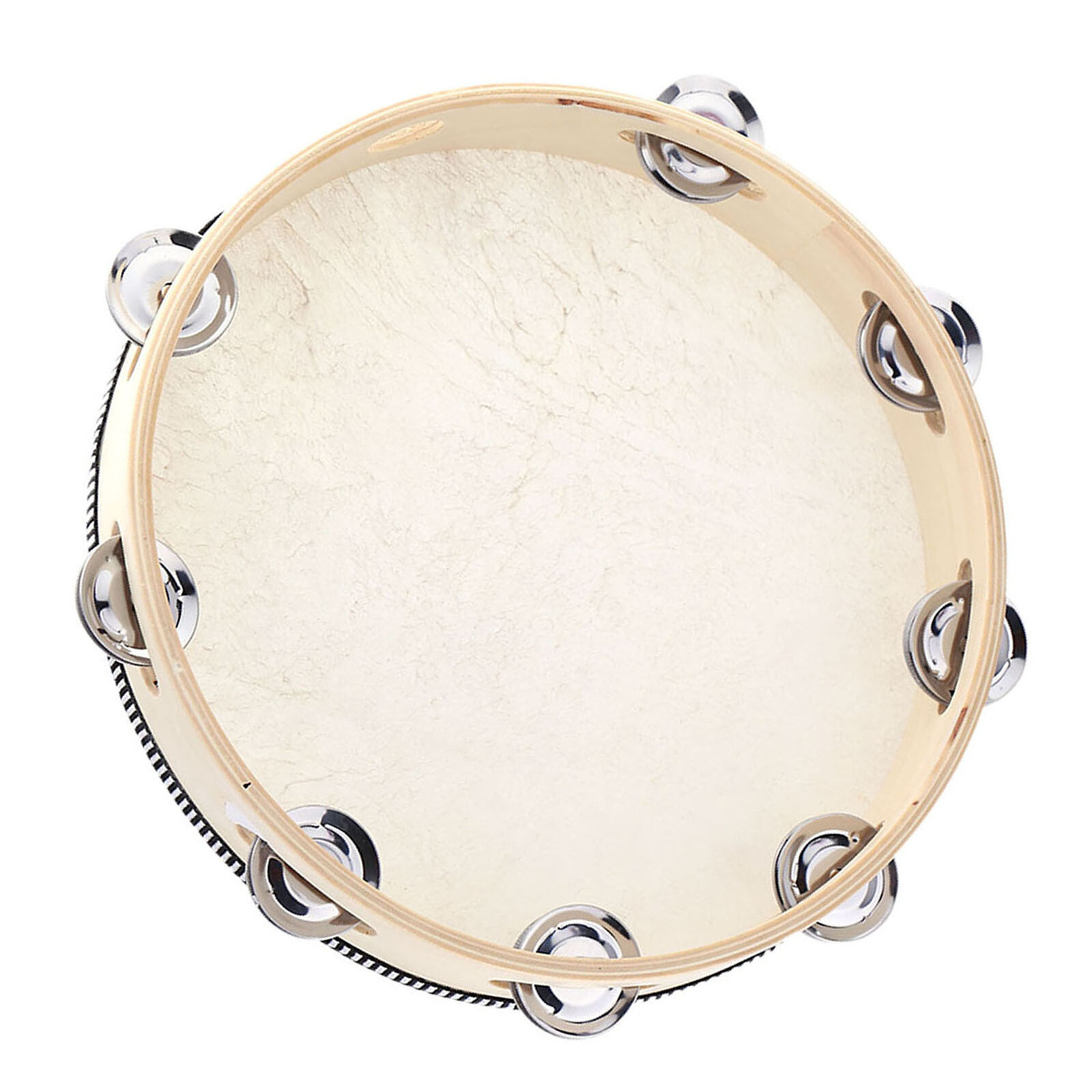 The third verse appears next and is strikingly similar to the first in most respects. However, there are no chirping flutes in the first three measures this time, a single flute playing held out notes in the first and third measures instead. The fourth and sixth measures also feature a solo flute, each of these measures containing a triplet to fill in the gaps left by Paul's vocals; measure four having a descending triplet and measure six having an ascending triplet. A tambourine is added for this verse as well, accented on the two and four beat of every measure. An ascending trumpet part is heard in the seventh and eighth measures (in the stereo mix of the song), as well as Ringo's tubular bell hits in the eighth measure to highlight the reference to the “fire engine.” The third verse appears next and is strikingly similar to the first in most respects. However, there are no chirping flutes in the first three measures this time, a single flute playing held out notes in the first and third measures instead. The fourth and sixth measures also feature a solo flute, each of these measures containing a triplet to fill in the gaps left by Paul's vocals; measure four having a descending triplet and measure six having an ascending triplet. A tambourine is added for this verse as well, accented on the two and four beat of every measure. An ascending trumpet part is heard in the seventh and eighth measures (in the stereo mix of the song), as well as Ringo's tubular bell hits in the eighth measure to highlight the reference to the “fire engine.”
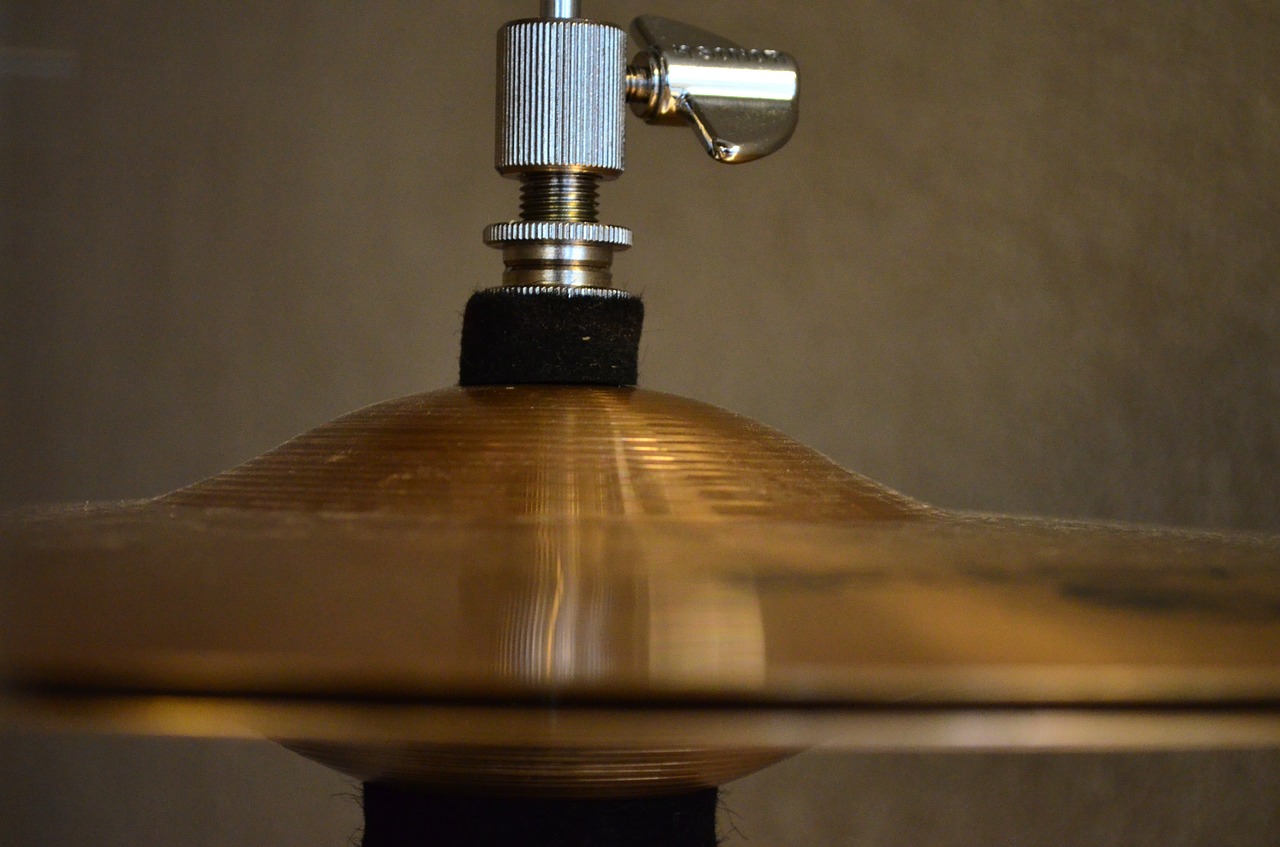 The fourth verse then follows, which is strictly instrumental apart from Paul's “aah” accents which are heard periodically. The tambourine disappears for this verse, but is replaced by John's conga drum playing. Ringo opens up the presence of this verse by riding on the cymbal instead of the hi-hat. And, of course, the most prominent feature of this verse is the superbly performed piccolo trumpet solo by David Mason, with his high-note climax heard on the third of the three note drum accents as repeated from the second verse. The fourth verse then follows, which is strictly instrumental apart from Paul's “aah” accents which are heard periodically. The tambourine disappears for this verse, but is replaced by John's conga drum playing. Ringo opens up the presence of this verse by riding on the cymbal instead of the hi-hat. And, of course, the most prominent feature of this verse is the superbly performed piccolo trumpet solo by David Mason, with his high-note climax heard on the third of the three note drum accents as repeated from the second verse.
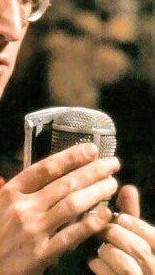 The second chorus then follows which mimics the previous chorus rather closely. Differences include the sound effects (sped up drum rolls?) that occur in the fourth beat of both the first and second measures. John's harmonized vocals now occur on the newly added lyric “four of fish and finger pies in summer.” The second chorus then follows which mimics the previous chorus rather closely. Differences include the sound effects (sped up drum rolls?) that occur in the fourth beat of both the first and second measures. John's harmonized vocals now occur on the newly added lyric “four of fish and finger pies in summer.”
The fifth verse then follows, which brings in the tambourine once again while trumpets play staccato blasts on the two and four beat of the first six measures. The cor anglais (English Horn) then hits a single high note that is held for the seventh and eighth measures. Otherwise the general instrumentation is the same as the third verse.
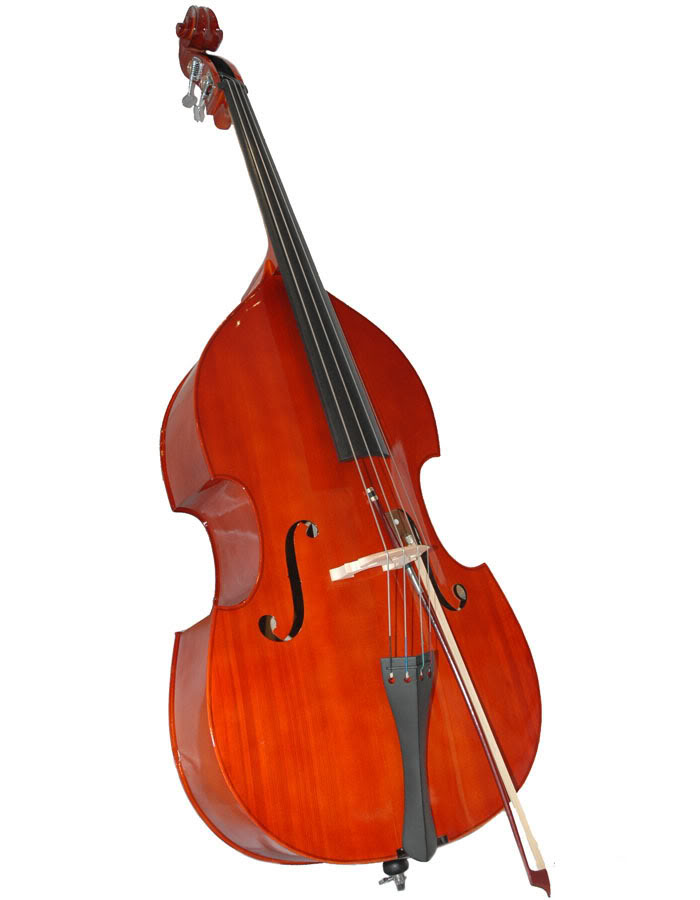 The sixth and final verse then commences, which still includes the tambourine and the staccato trumpets in the first six measures. The bowed double-bass comes in on the third measure with a descending line that holds out its final note throughout the entire fourth measure. The sixth measure brings in Ringo's tubular bells once again in reference to the “fireman.” The eighth measure has the three beat accents with Paul's lyric “very strange” as was heard in the second verse. The sixth and final verse then commences, which still includes the tambourine and the staccato trumpets in the first six measures. The bowed double-bass comes in on the third measure with a descending line that holds out its final note throughout the entire fourth measure. The sixth measure brings in Ringo's tubular bells once again in reference to the “fireman.” The eighth measure has the three beat accents with Paul's lyric “very strange” as was heard in the second verse.
The third chorus is then heard which is quite similar to the first chorus but with the trumpets playing a different pattern throughout. David Mason here returns with a simple quarter-note melody line in the third and fourth measures. The other trumpets highlight the three note accents with the rest of the instruments in the eighth measure this time, while the “machine gun-like” sound effects (a sped up drum roll?) occurs at the end of this final measure.
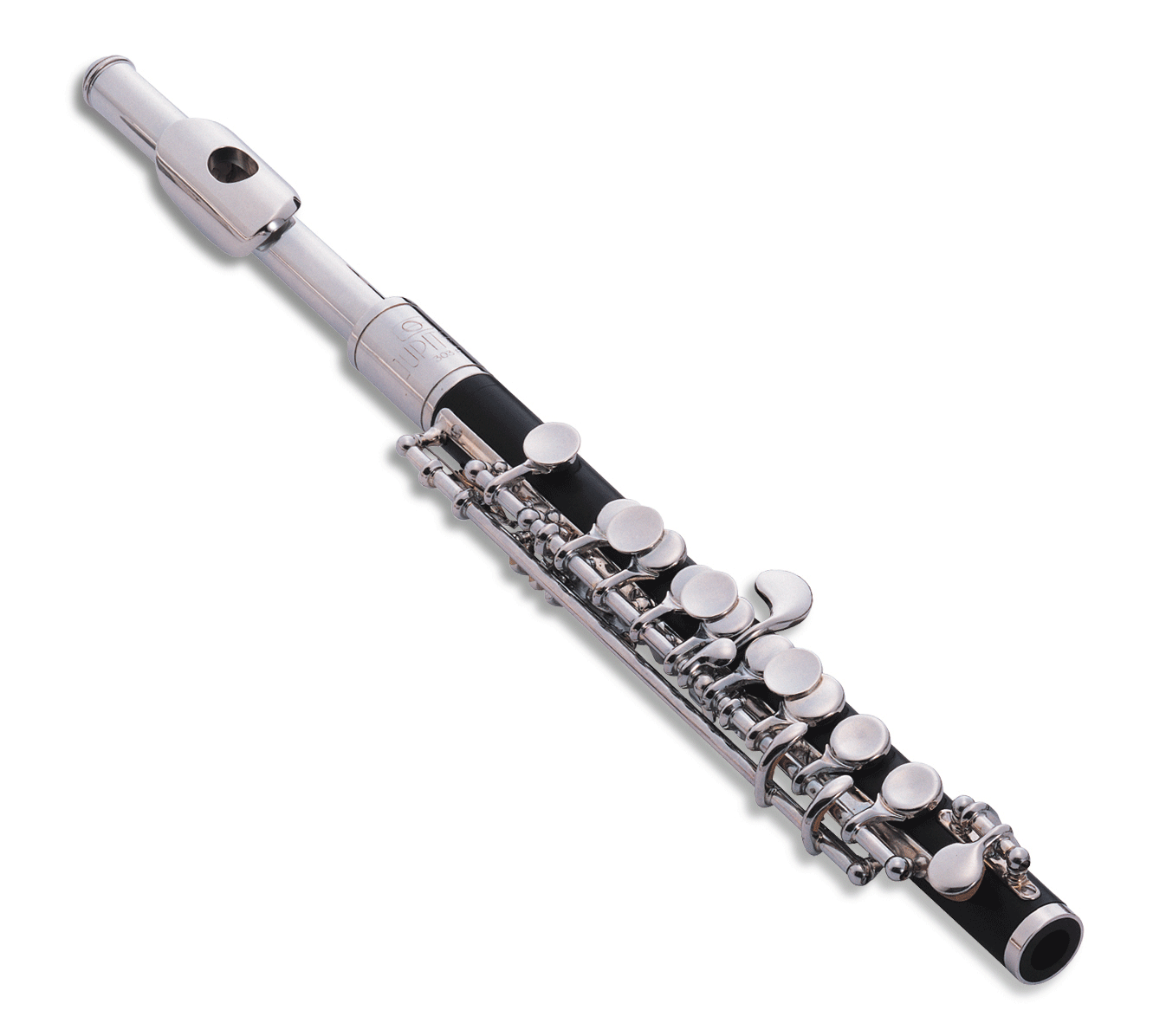 The fourth and final chorus is different from the rest in that it raises its key. A piccolo plays the melody line in unison with Paul's lead vocals in the main body of the entire chorus this time around. The tambourine also appears here, the only time it's been played in a chorus. David Mason's piccolo trumpet appears again with a rather complicated line in the third and fourth measures, and then a simpler one in the seventh and eighth measures. To finish off the last measure, Paul repeats the song's title, this evolving into the final chord of the song. This final chord prominently features the highly reverberated piano played through a Vox amplifier, the high pitched squeal of Paul's harmonium, and Ringo's rapid-fire cymbal work, all three of these elements from the original four-track tape. Regarding the high pitched squeal, Paul explained in "McCartney 3,2,1": "Anyone else would go, 'oh, that's feedback, let's get rid of it.' And it well might be feedback, I don't remember. But with us, it's, 'No, it sounds good, y'know, it's great, that's fine, y'know.' So we'd leave accidents a lot of the time." The fourth and final chorus is different from the rest in that it raises its key. A piccolo plays the melody line in unison with Paul's lead vocals in the main body of the entire chorus this time around. The tambourine also appears here, the only time it's been played in a chorus. David Mason's piccolo trumpet appears again with a rather complicated line in the third and fourth measures, and then a simpler one in the seventh and eighth measures. To finish off the last measure, Paul repeats the song's title, this evolving into the final chord of the song. This final chord prominently features the highly reverberated piano played through a Vox amplifier, the high pitched squeal of Paul's harmonium, and Ringo's rapid-fire cymbal work, all three of these elements from the original four-track tape. Regarding the high pitched squeal, Paul explained in "McCartney 3,2,1": "Anyone else would go, 'oh, that's feedback, let's get rid of it.' And it well might be feedback, I don't remember. But with us, it's, 'No, it sounds good, y'know, it's great, that's fine, y'know.' So we'd leave accidents a lot of the time."
 As related above, Geoff Emerick had to admit that “some of the overdubs got buried altogether because of the density of the instrumentation and the number of bounces.” This is definitely the case here, being that no evidence of either John's or George's guitar work appears in the finished product, nor can The Beatles handclaps be heard anywhere. As related above, Geoff Emerick had to admit that “some of the overdubs got buried altogether because of the density of the instrumentation and the number of bounces.” This is definitely the case here, being that no evidence of either John's or George's guitar work appears in the finished product, nor can The Beatles handclaps be heard anywhere.
 Nonetheless, after three tape reductions, what is heard was arranged meticulously and breathtakingly performed. Paul takes center stage with great vocal work, bass, harmonium, piano, piano and piano. We can hear John's piano (two overdubs), conga drums, and harmony vocals done flawlessly. Ringo's drums, tambourine and percussion overdubs work beautifully with the song as well. It's unfortunate that we can't hear any contribution that George made to “Penny Lane” during this three-week period, apart from the percussive effects done at the first recording session and any handclaps that can be heard in the song. Since he admits that his “heart was still in India” at this time, I don't think he cared all that much anyway. Nonetheless, after three tape reductions, what is heard was arranged meticulously and breathtakingly performed. Paul takes center stage with great vocal work, bass, harmonium, piano, piano and piano. We can hear John's piano (two overdubs), conga drums, and harmony vocals done flawlessly. Ringo's drums, tambourine and percussion overdubs work beautifully with the song as well. It's unfortunate that we can't hear any contribution that George made to “Penny Lane” during this three-week period, apart from the percussive effects done at the first recording session and any handclaps that can be heard in the song. Since he admits that his “heart was still in India” at this time, I don't think he cared all that much anyway.
American Releases
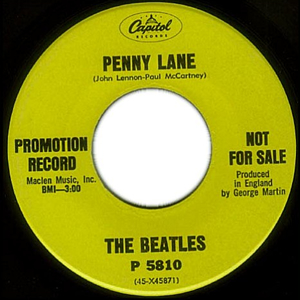 Around the first week of February, 1967, the "promotion record" disc of "Penny Lane," backed with "Strawberry Fields Forever," was distributed to radio stations around the US. This is mentioned separately from its release for the general public because of the unique mix of "Penny Lane" contained on this disc. As mentioned above, Capitol Records initially received an early mix of the song that contained a concluding piccolo trumpet flourish from David Mason that was later decided to be left off of the final version. Around the first week of February, 1967, the "promotion record" disc of "Penny Lane," backed with "Strawberry Fields Forever," was distributed to radio stations around the US. This is mentioned separately from its release for the general public because of the unique mix of "Penny Lane" contained on this disc. As mentioned above, Capitol Records initially received an early mix of the song that contained a concluding piccolo trumpet flourish from David Mason that was later decided to be left off of the final version.
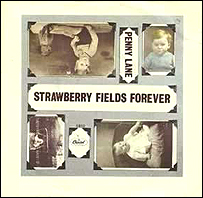 As in indicated in Bruce Spizer's book “The Beatles' Story On Capitol Records – Part One,” “disc jockeys and listeners in America responded more favorably to the more upbeat 'Penny Lane.'” What they responded so favorably to was a version that was a little different from what they received when they bought their own copies at their local record store. On February 13th, 1967 (four days before the UK), the single was released to the general public with the newly mixed version of “Penny Lane” without the concluding Piccolo trumpet flourish, but with a very classy picture sleeve. Interestingly, as Bruce Spizer relates, “The February 25th Billboard (magazine) reported 'Strawberry Fields Forever' at #83 and 'Penny Lane' at #85...'Strawberry Fields Forever' was intended to be the a side of the double-a-sided single.” That quickly changed. Three weeks later “Penny Lane” was at #1 on the Billboard Hot 100 while “Strawberry Fields” peaked at #8. “Penny Lane” stayed for one week in the top spot, being quickly overcome by “Happy Together” by The Turtles. As in indicated in Bruce Spizer's book “The Beatles' Story On Capitol Records – Part One,” “disc jockeys and listeners in America responded more favorably to the more upbeat 'Penny Lane.'” What they responded so favorably to was a version that was a little different from what they received when they bought their own copies at their local record store. On February 13th, 1967 (four days before the UK), the single was released to the general public with the newly mixed version of “Penny Lane” without the concluding Piccolo trumpet flourish, but with a very classy picture sleeve. Interestingly, as Bruce Spizer relates, “The February 25th Billboard (magazine) reported 'Strawberry Fields Forever' at #83 and 'Penny Lane' at #85...'Strawberry Fields Forever' was intended to be the a side of the double-a-sided single.” That quickly changed. Three weeks later “Penny Lane” was at #1 on the Billboard Hot 100 while “Strawberry Fields” peaked at #8. “Penny Lane” stayed for one week in the top spot, being quickly overcome by “Happy Together” by The Turtles.
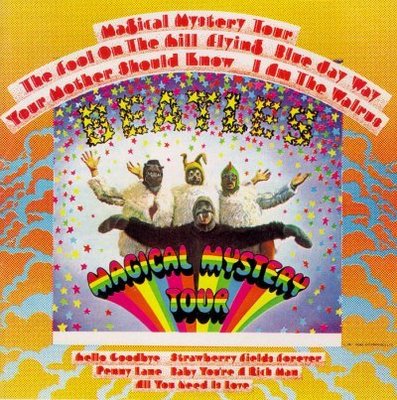 “Penny Lane” may not have been included on the album “Sgt. Pepper's Lonely Hearts Club Band” as intended, but it did get a 1967 album release on “Magical Mystery Tour.” Released on November 27th, 1967, the album quickly became Christmas presents for music fans that year, peaking at #1 by January 6th, 1968 and staying in the top spot for a total of eight weeks. Since a stereo mix did not exist at that time, the stereo copies of the album contained a mock stereo mix created from the mono mix, as described above. The vinyl version of this album continued to be reissued in the US throughout the years, while it got its first CD release on September 21st, 1987, with a true stereo mix now in place. The CD was then remastered and re-released on September 9th, 2009. “Penny Lane” may not have been included on the album “Sgt. Pepper's Lonely Hearts Club Band” as intended, but it did get a 1967 album release on “Magical Mystery Tour.” Released on November 27th, 1967, the album quickly became Christmas presents for music fans that year, peaking at #1 by January 6th, 1968 and staying in the top spot for a total of eight weeks. Since a stereo mix did not exist at that time, the stereo copies of the album contained a mock stereo mix created from the mono mix, as described above. The vinyl version of this album continued to be reissued in the US throughout the years, while it got its first CD release on September 21st, 1987, with a true stereo mix now in place. The CD was then remastered and re-released on September 9th, 2009.
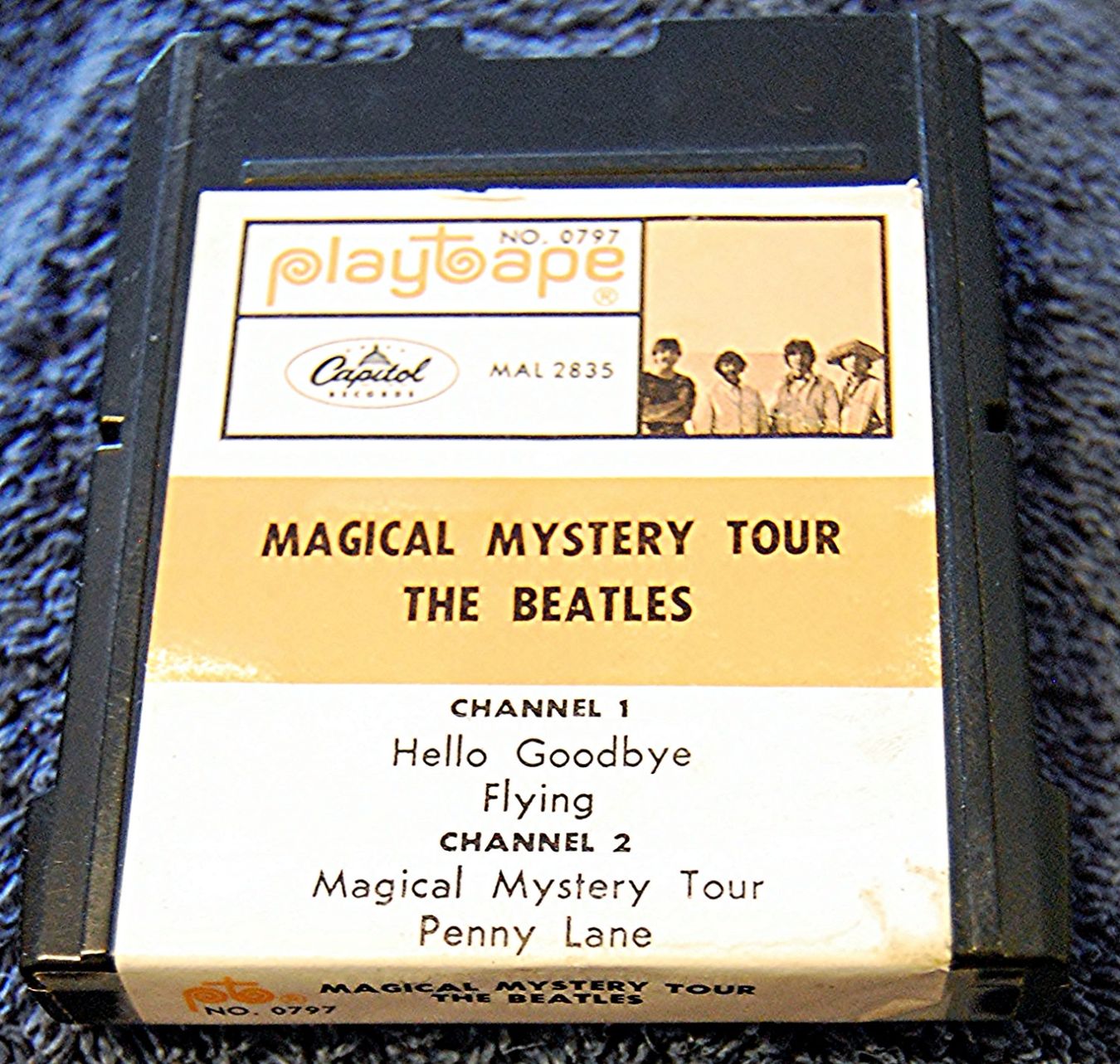 Sometime in 1967, Capitol released Beatles music on a new but short-lived format called "Playtapes." These tape cartridges did not have the capabilities to include entire albums, so a truncated four-song version of "Magical Mytery Tour" was released in early 1968 in this portable format, some rare copies having a picture from the "Help!" soundtrack album on the front of the tape. "Penny Lane" was one of the four songs on this release. These Playtapes are highly collectable today. Sometime in 1967, Capitol released Beatles music on a new but short-lived format called "Playtapes." These tape cartridges did not have the capabilities to include entire albums, so a truncated four-song version of "Magical Mytery Tour" was released in early 1968 in this portable format, some rare copies having a picture from the "Help!" soundtrack album on the front of the tape. "Penny Lane" was one of the four songs on this release. These Playtapes are highly collectable today.
On April 2nd, 1973, the compilation album “The Beatles/1967-1970” was released, initially with a somewhat improved upon mock stereo mix of “Penny Lane” as its second track. When this album was first released on CD on September 20th, 1993, the true stereo mix was finally included. This album was then remastered and re-released on August 10th, 2010.
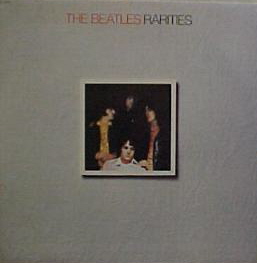 Then came the US “Rarities” album, which was released on March 24th, 1980. As indicated above, Capitol created a new and unique mix of the song by combining the stereo mix (which US audiences hadn't heard yet up to this point) with the piccolo trumpet conclusion as heard on the promotion copies of the US single. Then came the US “Rarities” album, which was released on March 24th, 1980. As indicated above, Capitol created a new and unique mix of the song by combining the stereo mix (which US audiences hadn't heard yet up to this point) with the piccolo trumpet conclusion as heard on the promotion copies of the US single.
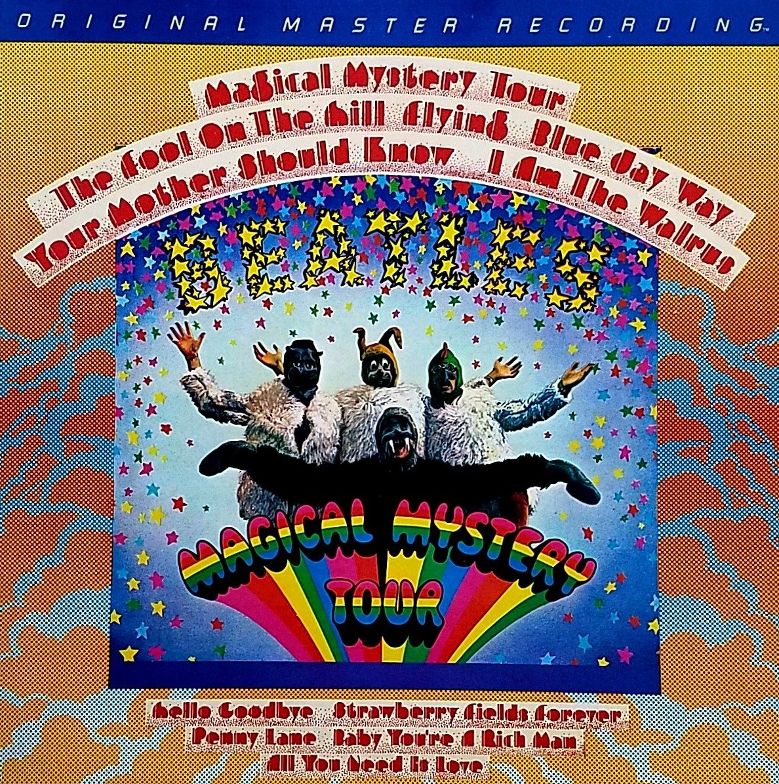 An interesting US vinyl edition of the “Magical Mystery Tour” album was released on February 1st, 1981. This was manufactured by Mobile Fidelity Sound Lab in Chatsworth, California and was part of their "Original Master Recording" series, which prepared its albums utilizing half-speed mastering technology from the original master tapes. In this case, however, they leased the master tape from EMI in the UK, not realizing that this was a second generation master tape originally supplied by Capitol Records in America. This being the case, this new release contained a second generation version of the duophonic "fake stereo" mixes of "Penny Lane," “Baby, You're A Rich Man” and “All You Need Is Love,” this release arguably being the worst ever version of the "Magical Mystery Tour" album ever released. Also, as was the case with all of the vinyl editions of the album by this time, the original multi-page booklet was omitted from this new vinyl release. Nevertheless, this edition of the album was only available for a short time and is quite collectible today for completists who need to own even the worst available copy of the album. An interesting US vinyl edition of the “Magical Mystery Tour” album was released on February 1st, 1981. This was manufactured by Mobile Fidelity Sound Lab in Chatsworth, California and was part of their "Original Master Recording" series, which prepared its albums utilizing half-speed mastering technology from the original master tapes. In this case, however, they leased the master tape from EMI in the UK, not realizing that this was a second generation master tape originally supplied by Capitol Records in America. This being the case, this new release contained a second generation version of the duophonic "fake stereo" mixes of "Penny Lane," “Baby, You're A Rich Man” and “All You Need Is Love,” this release arguably being the worst ever version of the "Magical Mystery Tour" album ever released. Also, as was the case with all of the vinyl editions of the album by this time, the original multi-page booklet was omitted from this new vinyl release. Nevertheless, this edition of the album was only available for a short time and is quite collectible today for completists who need to own even the worst available copy of the album.
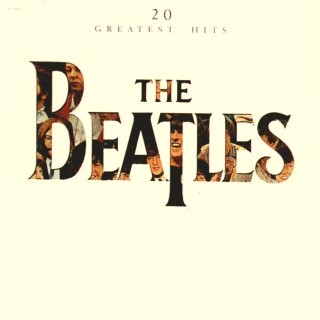 On October 11th, 1982, the compilation album “20 Greatest Hits” was released, which featured “Penny Lane” as the first track on side two (or the last track of side one if you bought the cassette version). On October 11th, 1982, the compilation album “20 Greatest Hits” was released, which featured “Penny Lane” as the first track on side two (or the last track of side one if you bought the cassette version).
A limited edition red vinyl pressing of “Penny Lane / Strawberry Fields Forever” was released on Capitol Cema in March of 1994, which is quite a rare find today.
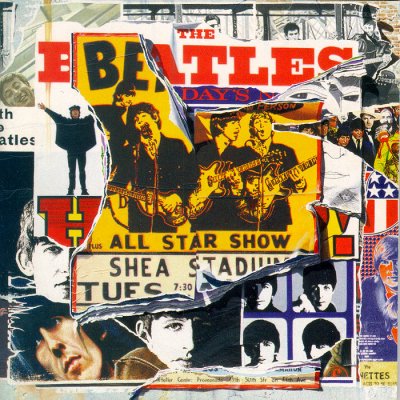 On March 18th, 1996, the compilation album “Anthology 2” was released, which contains the composite version of “Penny Lane” detailed above, this giving a never before heard perspective of the recording genesis of the song. On March 18th, 1996, the compilation album “Anthology 2” was released, which contains the composite version of “Penny Lane” detailed above, this giving a never before heard perspective of the recording genesis of the song.
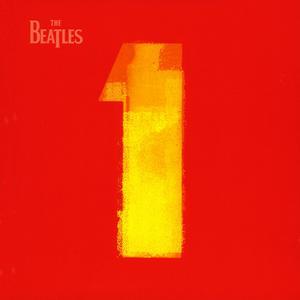 The very popular “Beatles 1” album was released on November 13th, 2000, “Penny Lane” gaining its inclusion because of it reaching the #1 summit in America. In September of 2011, it also received a remastered release, and then a newly mixed version was released on November 6th, 2015. The very popular “Beatles 1” album was released on November 13th, 2000, “Penny Lane” gaining its inclusion because of it reaching the #1 summit in America. In September of 2011, it also received a remastered release, and then a newly mixed version was released on November 6th, 2015.
Minor elements of the song are also to be detected in the November 20th, 2006 released album “Love.” On both the tracks “Glass Onion” and “Strawberry Fields Forever,” bits of the brass parts of “Penny Lane” are heard.
On September 9th, 2009, the CD box set “The Beatles In Mono” was released which contained the entire mono Beatles catalog in a newly remastered condition, “Penny Lane” being among the collection. The vinyl edition of this box set was first released on September 9th, 2014.
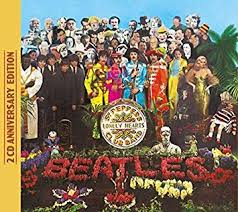 On May 26th, 2017, the 50th Anniversary editions of the "Sgt. Pepper" album were released, most of which included the excellent newly mixed stereo version of "Penny Lane" as a bonus track. Also included on the "2 CD Anniversay Edition" was "Take 6 - Instrumental" while a track entitled "Vocal Overdubs and Speech," taken primarily from their January 6th "Penny Lane" session, is also included on the "Super Deluxe Edition" box set. On May 26th, 2017, the 50th Anniversary editions of the "Sgt. Pepper" album were released, most of which included the excellent newly mixed stereo version of "Penny Lane" as a bonus track. Also included on the "2 CD Anniversay Edition" was "Take 6 - Instrumental" while a track entitled "Vocal Overdubs and Speech," taken primarily from their January 6th "Penny Lane" session, is also included on the "Super Deluxe Edition" box set.
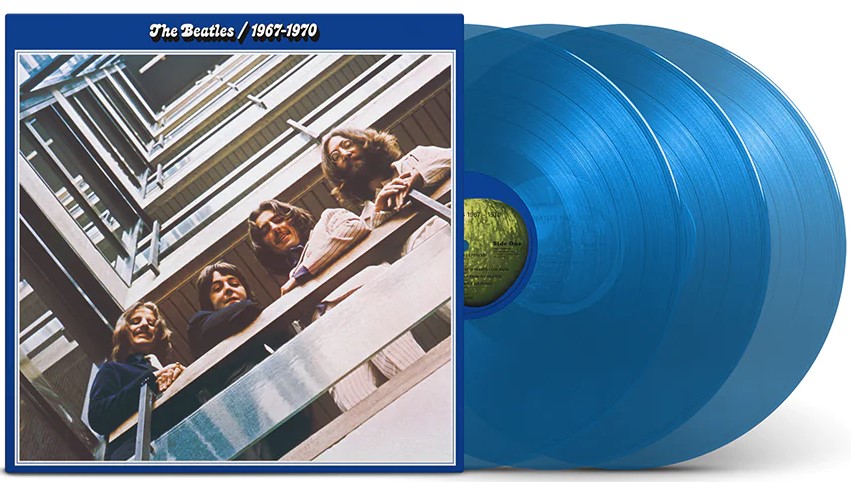 A 50th Anniversay edition of the compilation album "The Beatles / 1967 - 1970" (aka "The Blue Album") was released on November 10th, 2023, the Giles Martin stereo mix of "Penny Lane" as detailed above, being included. This expanded release included 12 additional songs for a total of 38 tracks, and was made available as a double CD and as a triple vinyl release on both black and blue vinyl. A 50th Anniversay edition of the compilation album "The Beatles / 1967 - 1970" (aka "The Blue Album") was released on November 10th, 2023, the Giles Martin stereo mix of "Penny Lane" as detailed above, being included. This expanded release included 12 additional songs for a total of 38 tracks, and was made available as a double CD and as a triple vinyl release on both black and blue vinyl.
Not to be omitted is the November 16th, 1993 concert album by Paul McCartney entitled “Paul Is Live” which features his solo rendition of the song.
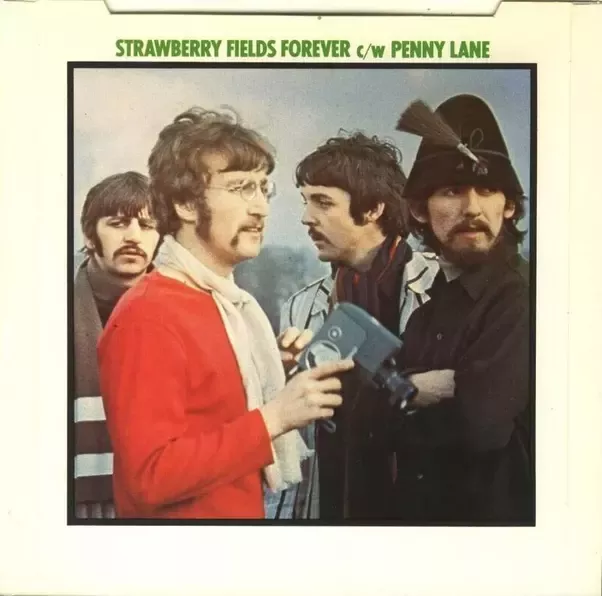
Picture sleeve depicting a scene from the "Penny Lane" promo film
Live Performances
The closest facsimile to a Beatles performance of "Penny Lane" would have to be the promotional clip they filmed on February 5th and 7th, 1967. With film director Peter Goldmann, the group (including a bearded George Harrison) met on location on February 5th, not around Penny Lane, but around Angel Lane, Stratford, in the east end of London.
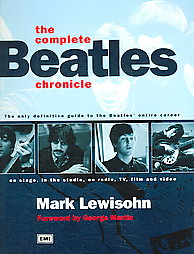 Mark Lewisohn's book “The Complete Beatles Chronicle” explains: “Keen to capture the flavor of the Liverpool suburban lane, yet unwilling or unable to travel to the actual area itself, The Beatles went to Stratford...where they were filmed riding white horses and walking in and around Angel Lane between 12 noon and 4 pm. To further the illusion that The Beatles were walking in Penny Lane, Goldmann and his crew from Don Long Productions went there without the group (date unknown) and shot footage of some of the local landmarks mentioned in the song: the barber's shop and the bus shelter in the middle of the roundabout, as well as the famous green Liverpool buses. This footage was then inter-cut with The Beatles' sequences.” Mark Lewisohn's book “The Complete Beatles Chronicle” explains: “Keen to capture the flavor of the Liverpool suburban lane, yet unwilling or unable to travel to the actual area itself, The Beatles went to Stratford...where they were filmed riding white horses and walking in and around Angel Lane between 12 noon and 4 pm. To further the illusion that The Beatles were walking in Penny Lane, Goldmann and his crew from Don Long Productions went there without the group (date unknown) and shot footage of some of the local landmarks mentioned in the song: the barber's shop and the bus shelter in the middle of the roundabout, as well as the famous green Liverpool buses. This footage was then inter-cut with The Beatles' sequences.”
T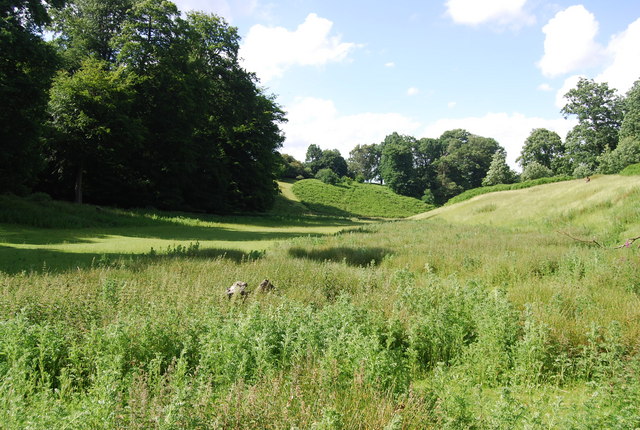 wo days later, on February 7th, The Beatles returned to Knole Park, near Sevenoaks in Kent, where they had just completed shooting the “Strawberry Fields Forever” promo film clip, to complete the “Penny Lane” film. The final two segments filmed on this day were, as described by author Mark Lewisohn, “one in which they rode their white horses out through an archway in a ruined wall, and around the wall to their right; the other in which, despite the bitterly cold weather, they sat at a dinner table by the furthest of two nearby ponds and were served with their instruments by two bewigged men (one of whom was Mal Evans donning a "flunky's uniform" trimmed in gold braid and wearing a powdered wig, according to his diary). The Beatles were all wearing red suits designed by constumier Monty Berman. wo days later, on February 7th, The Beatles returned to Knole Park, near Sevenoaks in Kent, where they had just completed shooting the “Strawberry Fields Forever” promo film clip, to complete the “Penny Lane” film. The final two segments filmed on this day were, as described by author Mark Lewisohn, “one in which they rode their white horses out through an archway in a ruined wall, and around the wall to their right; the other in which, despite the bitterly cold weather, they sat at a dinner table by the furthest of two nearby ponds and were served with their instruments by two bewigged men (one of whom was Mal Evans donning a "flunky's uniform" trimmed in gold braid and wearing a powdered wig, according to his diary). The Beatles were all wearing red suits designed by constumier Monty Berman.
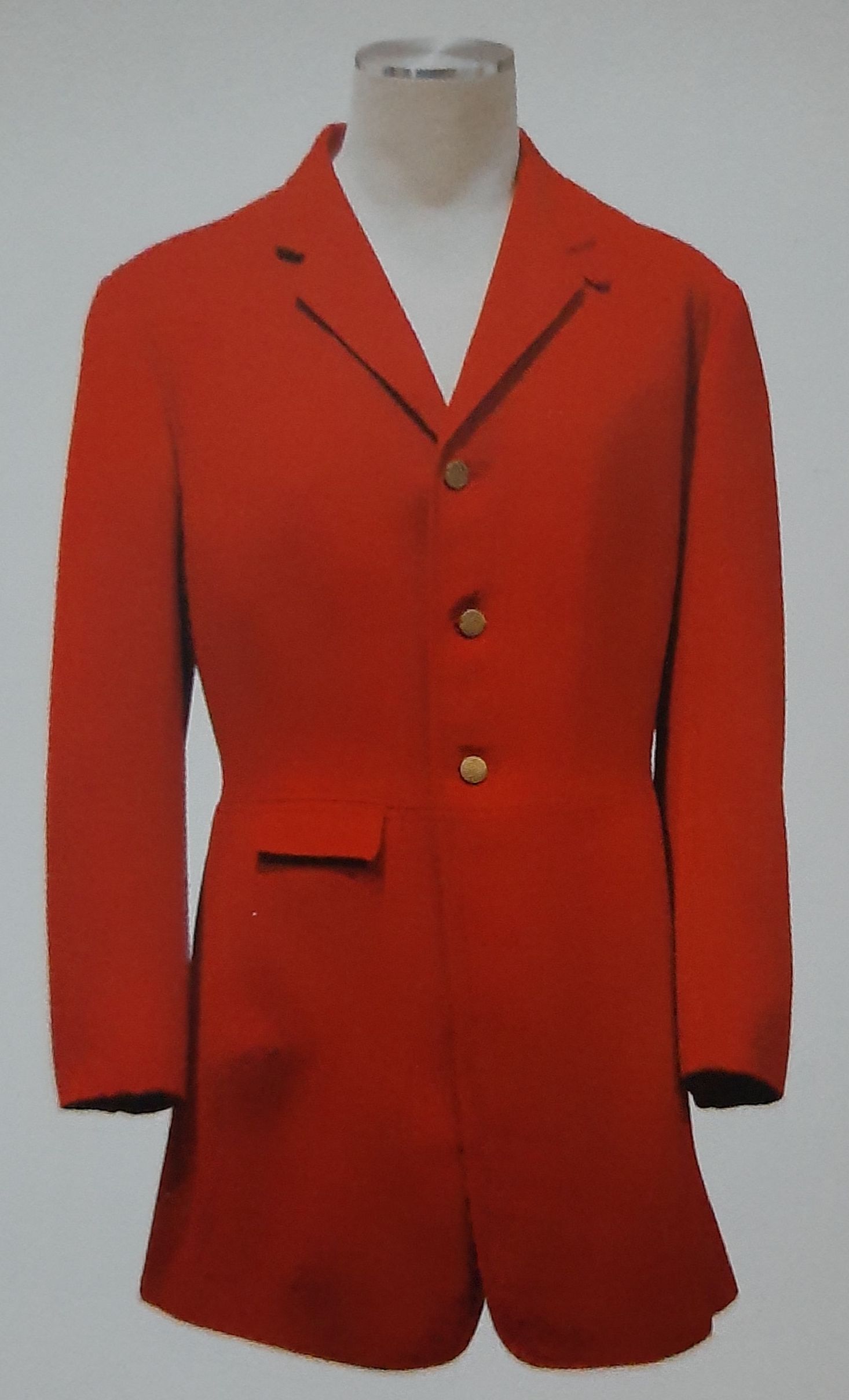 Since this promotional film did not include any footage of The Beatles pretending to play the song in any way, they did not run into any problem with the Musicians' Union ban which forbid miming on British television. This did become an issue later in the year with their promotional film for “Hello Goodbye,” however. Since this promotional film did not include any footage of The Beatles pretending to play the song in any way, they did not run into any problem with the Musicians' Union ban which forbid miming on British television. This did become an issue later in the year with their promotional film for “Hello Goodbye,” however.
 Paul McCartney periodically included “Penny Lane” in his live tours, the first being the “New World Tour,” which spanned from February 18th (Milan, Italy) to December 16th (Santiago, Chile), 1993. His “'04 Summer Tour” also included the song, which began on May 24th (Gijon, Spain) and ended on June 26th (Pilton, England), 2004. He then performed the song during his “'US' Tour,” which spanned from September 16th (Miami, Florida) to November 30th at the Staples Center (Los Angeles, California), 2005. Paul McCartney periodically included “Penny Lane” in his live tours, the first being the “New World Tour,” which spanned from February 18th (Milan, Italy) to December 16th (Santiago, Chile), 1993. His “'04 Summer Tour” also included the song, which began on May 24th (Gijon, Spain) and ended on June 26th (Pilton, England), 2004. He then performed the song during his “'US' Tour,” which spanned from September 16th (Miami, Florida) to November 30th at the Staples Center (Los Angeles, California), 2005.
Conclusion
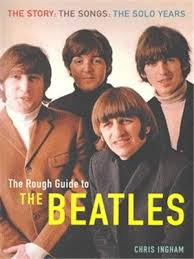 It is very difficult to find an author or reviewer who doesn't praise "Penny Lane." John Robertson describes it as "imaginative and lyrical," saying that the song "roamed the streets of Liverpool with a smile on its face." Chris Ingham calls it "jaunty psychedelic pop" with a "wry 'life's a gas' absurdism." Ian MacDonald comments: "With its vision of 'blue suburban skies' and boundlessly confident vigor, 'Penny Lane' distills the spirit of that time more perfectly than any other creative product of the mid-sixties." Tim Riley: "McCartney's command of the 45 genre in this song is masterful...everything coalesces into a hazy tingle that speaks to the innocent in everybody - it's as perfect as pop gets." It is very difficult to find an author or reviewer who doesn't praise "Penny Lane." John Robertson describes it as "imaginative and lyrical," saying that the song "roamed the streets of Liverpool with a smile on its face." Chris Ingham calls it "jaunty psychedelic pop" with a "wry 'life's a gas' absurdism." Ian MacDonald comments: "With its vision of 'blue suburban skies' and boundlessly confident vigor, 'Penny Lane' distills the spirit of that time more perfectly than any other creative product of the mid-sixties." Tim Riley: "McCartney's command of the 45 genre in this song is masterful...everything coalesces into a hazy tingle that speaks to the innocent in everybody - it's as perfect as pop gets."
While many authors take notice of some interesting inconsistencies in the lyrics, such as the presence of “pouring rain” at the same time as 'blue skies,' almost everyone draws immediate comparison with its single partner, Lennon's “Strawberry Fields Forever.” While both songs engage in remembrances of childhood locations and the memories they invoke, the emotions each depict could hardly be any more different.
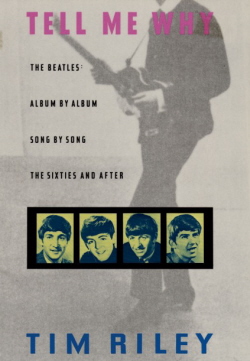 “McCartney's nostalgic 'Penny Lane' didn't have the psychic tension of Lennon's 'Strawberry Fields'” says John Robertson, adding, “No other single displays the complementary talents of the Lennon / McCartney pairing so well.” Chris Ingham describes “Penny Lane” as “the perfect flip-side to the shadowy uncertainty of Lennon's 'Strawberry Fields' and when taken together, they are the most vivid expression yet made of the differences in the respective composers' outlooks.” Tim Riley states: “'Penny Lane' is detailed and dramatic, 'Strawberry Fields Forever' is evocative and euphemistic.” “McCartney's nostalgic 'Penny Lane' didn't have the psychic tension of Lennon's 'Strawberry Fields'” says John Robertson, adding, “No other single displays the complementary talents of the Lennon / McCartney pairing so well.” Chris Ingham describes “Penny Lane” as “the perfect flip-side to the shadowy uncertainty of Lennon's 'Strawberry Fields' and when taken together, they are the most vivid expression yet made of the differences in the respective composers' outlooks.” Tim Riley states: “'Penny Lane' is detailed and dramatic, 'Strawberry Fields Forever' is evocative and euphemistic.”
Expressed more simply, producer George Martin exclaims: “'Penny Lane' / 'Strawberry Fields Forever' was the best record we ever made!” What else is there to say?
Song Summary
“Penny Lane”
Written by: John Lennon / Paul McCartney
- Song Written: December, 1966
- Song Recorded: December 29 and 30, 1966, January 4, 5, 6, 9, 10, 12 and 17, 1967
- First US Release Date: February 13, 1967
- US Single Release: Capitol #5810
- Highest Chart Position: #1 (one week)
- First US Album Release: Capitol #SMAL-2835 “Magical Mystery Tour”
- British Album Release: Apple #PSCP 718 “The Beatles/1967-1970”
- Length: 3:00
- Key: B major
- Producer: George Martin
- Engineers: Geoff Emerick, Phil McDonald
Instrumentation (most likely):
- Paul McCartney - Lead and Backing Vocals, Piano (1964 Challen upright 861834), Piano (1905 Steinway Vertegrand), Bass (1964 Rickenbacker 4001 S), Harmonium (Mannborg), handclaps, sound effects
- John Lennon - Piano (1964 Challen upright 861834), Rhythm Guitar (1961 Sonic Blue Fender Stratocaster), conga drums, harmony vocals, handclaps, sound effects
- George Harrison - Guitar (1965 Epiphone Casino ES-230TD), handclaps, sound effects
- Ringo Starr - Drums (1964 Ludwig Super Classic Black Oyster Pearl), tambourine, tubular bells, handclaps, sound effects
- George Martin - Piano (1905 Steinway Vertigrand)
- Ray Swinfield - Flute, Piccolo?
- P. Goody - Flute, Piccolo?
- Manny Winters - Flute
- Dennis Walton - Flute
- Leon Calvert - Trumpet, Flugelhorn?
- Freddy Clayton - Trumpet
- Bert Courtley - Trumpet
- Duncan Campbell - Trumpet
- Dick Morgan - Oboe, Cor Anglais
- Mike Winfield - Oboe, Cor Anglais
- Frank Clarke - Double-bass
- David Mason - Piccolo Trumpet
Written and compiled by Dave Rybaczewski
|
IF YOU WOULD LIKE TO MAKE A DONATION TO KEEP THIS WEBSITE UP AND RUNNING, PLEASE CLICK BELOW!
|